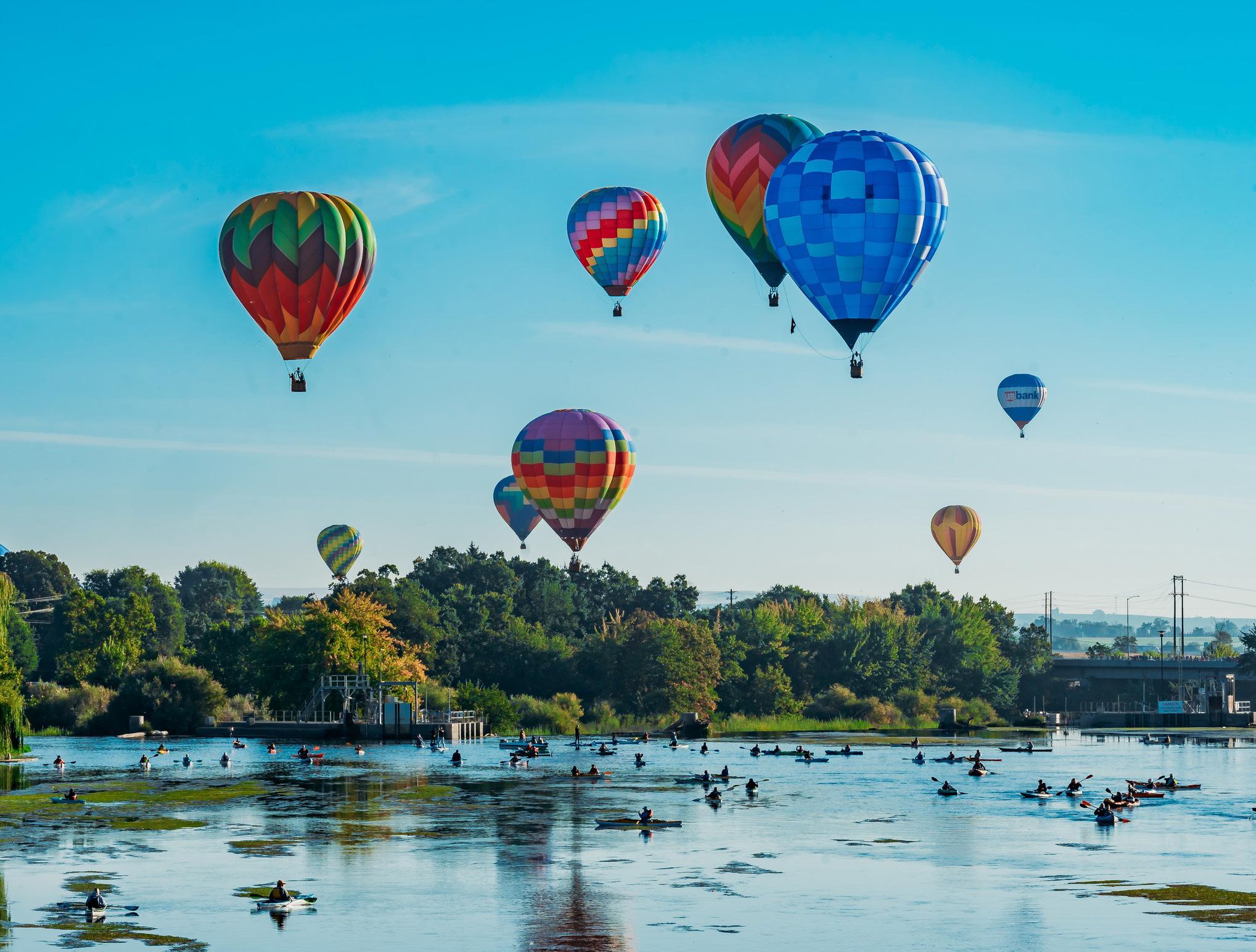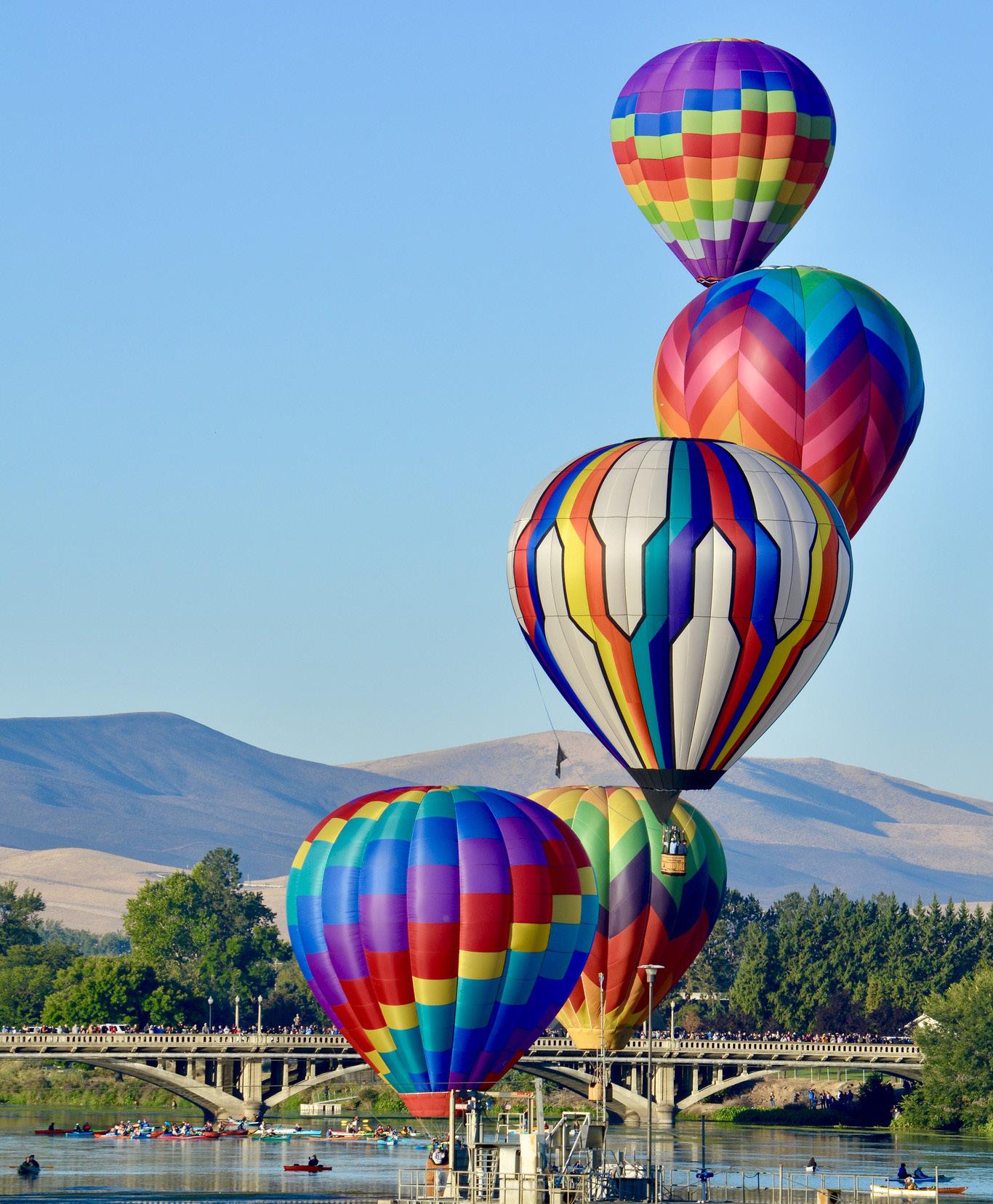PROSSER

SEPTEMBER 27, 28 AND 29, 2024



SEPTEMBER 27, 28 AND 29, 2024

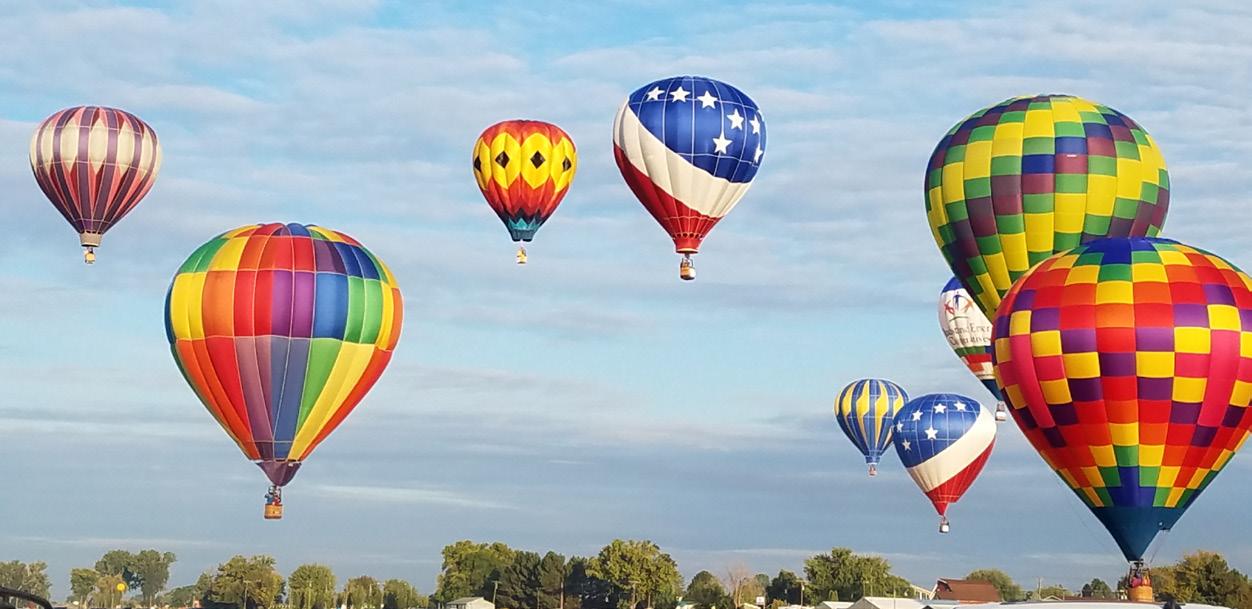







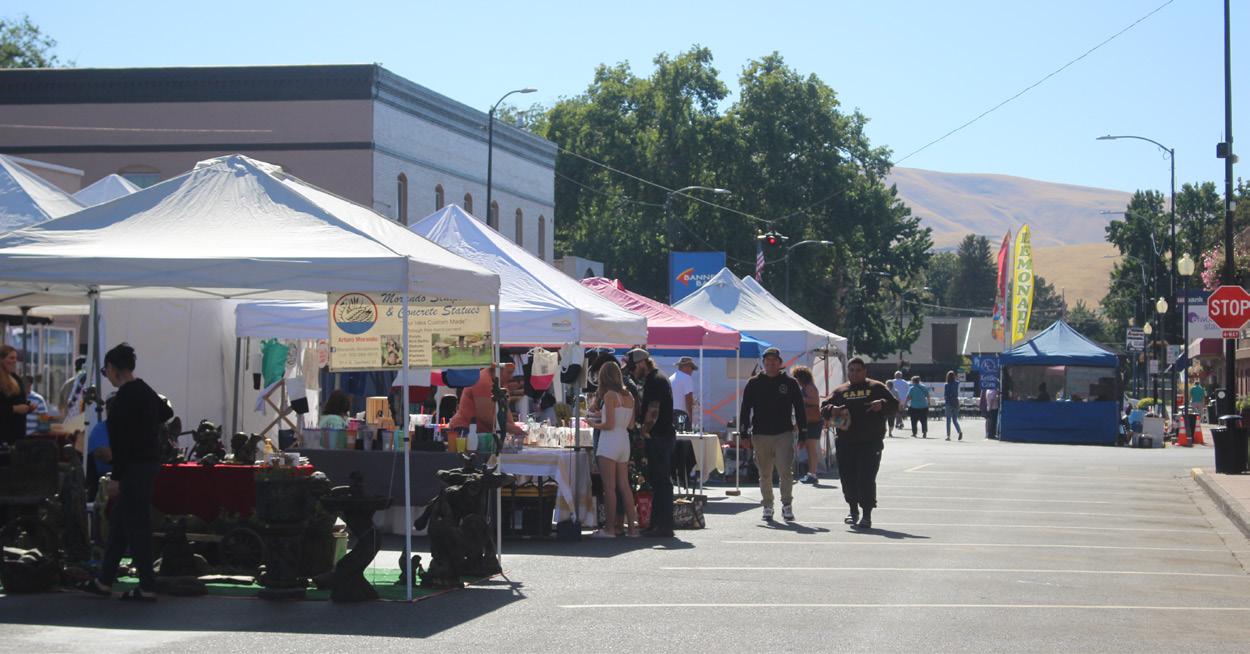
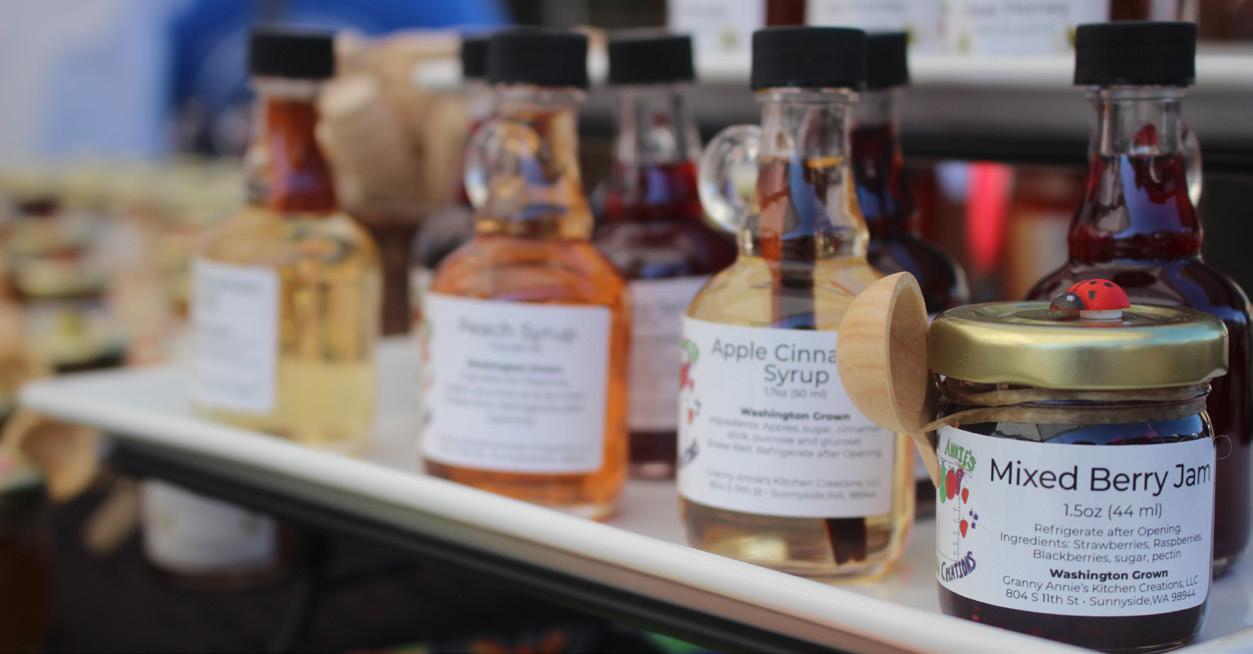


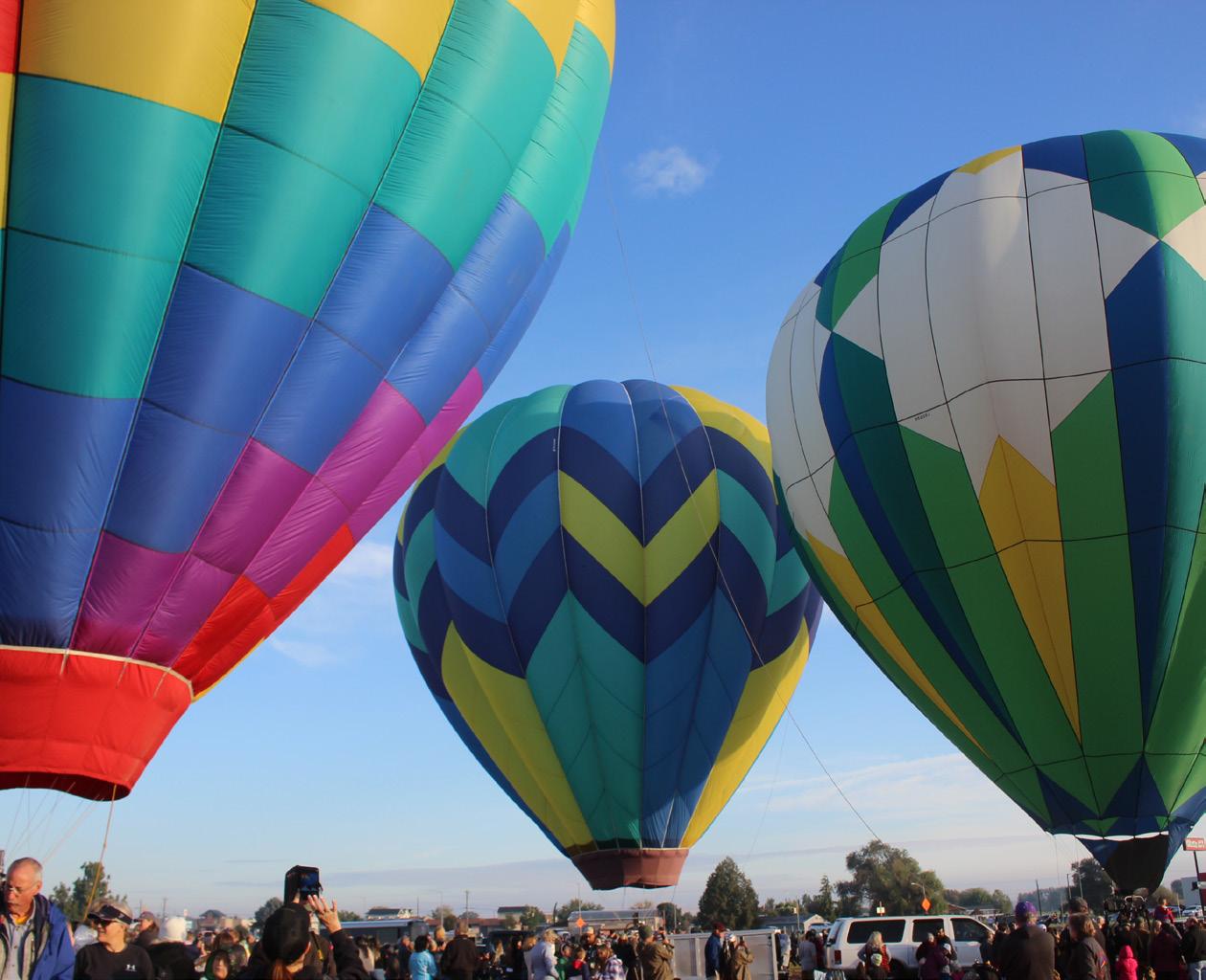


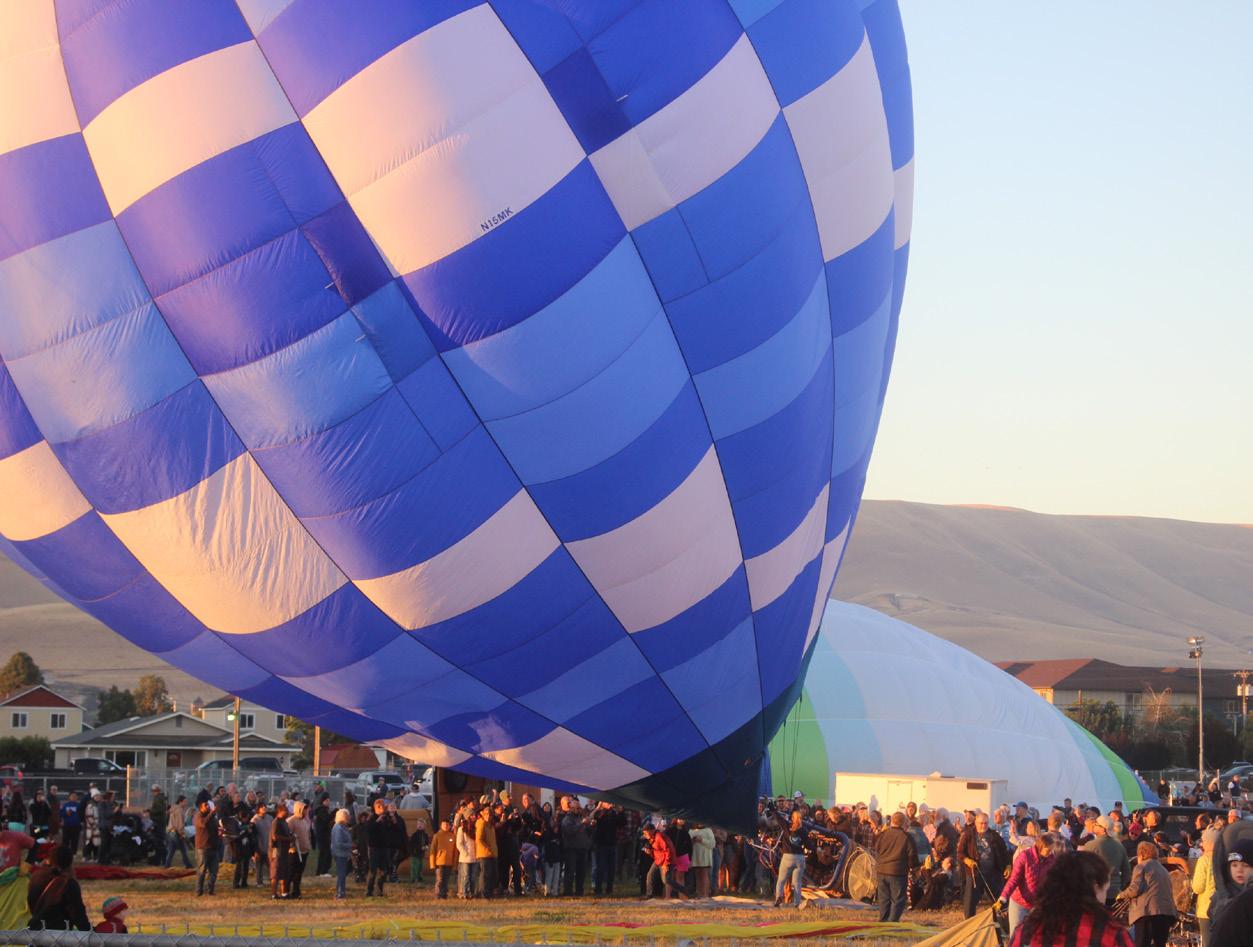

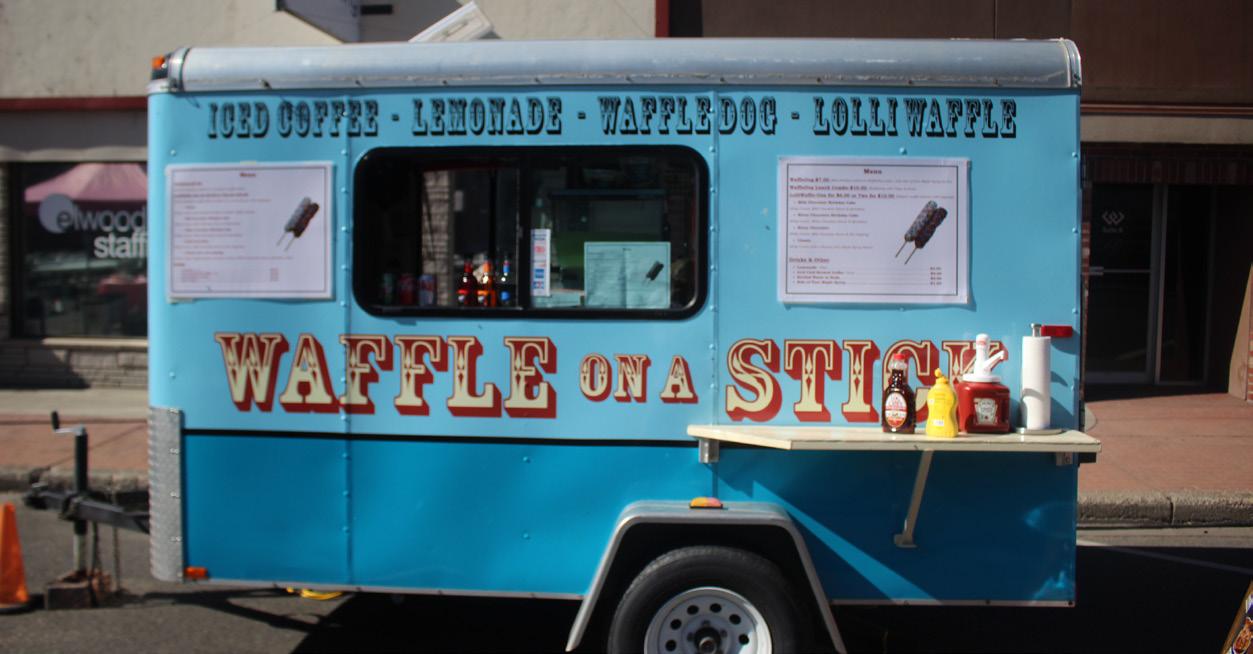
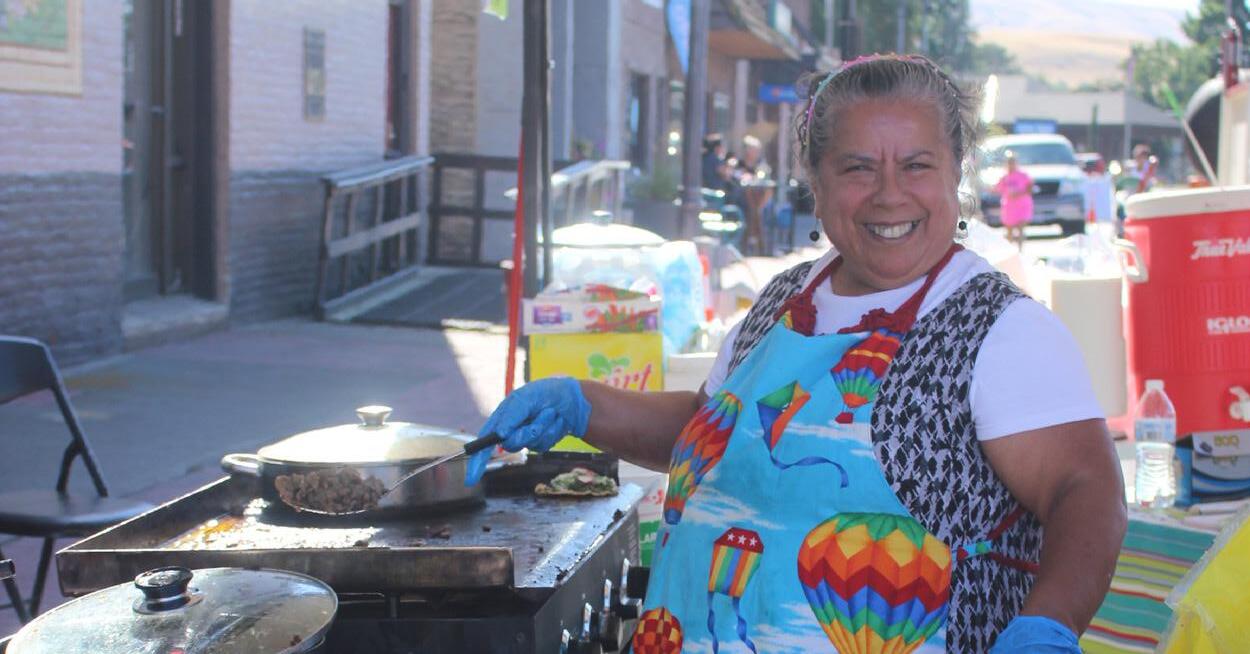

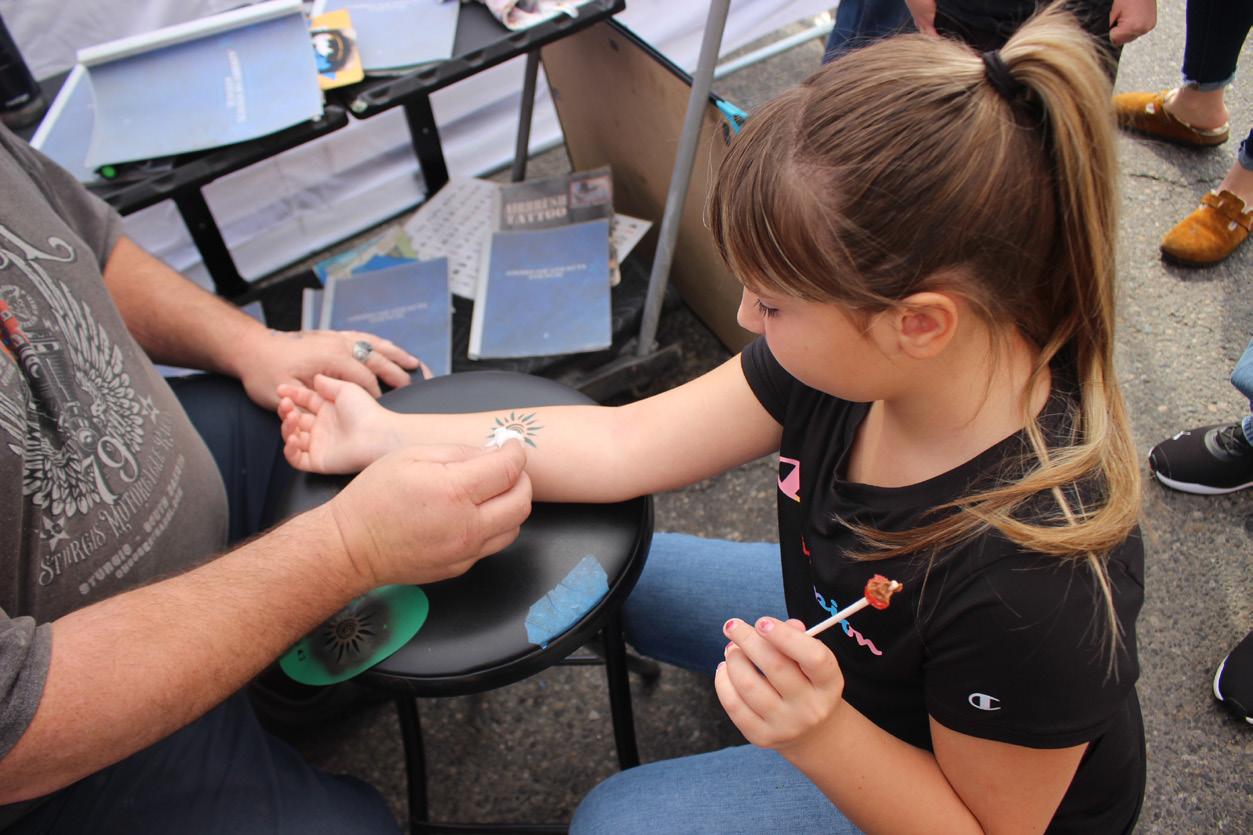

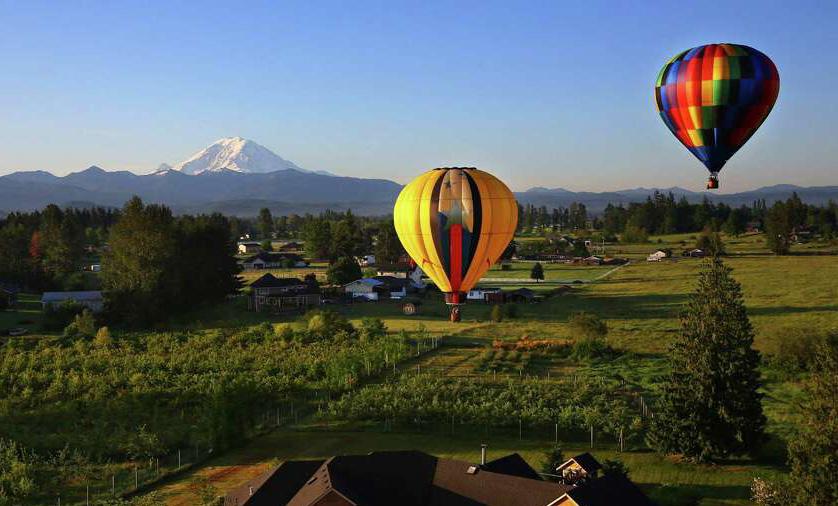
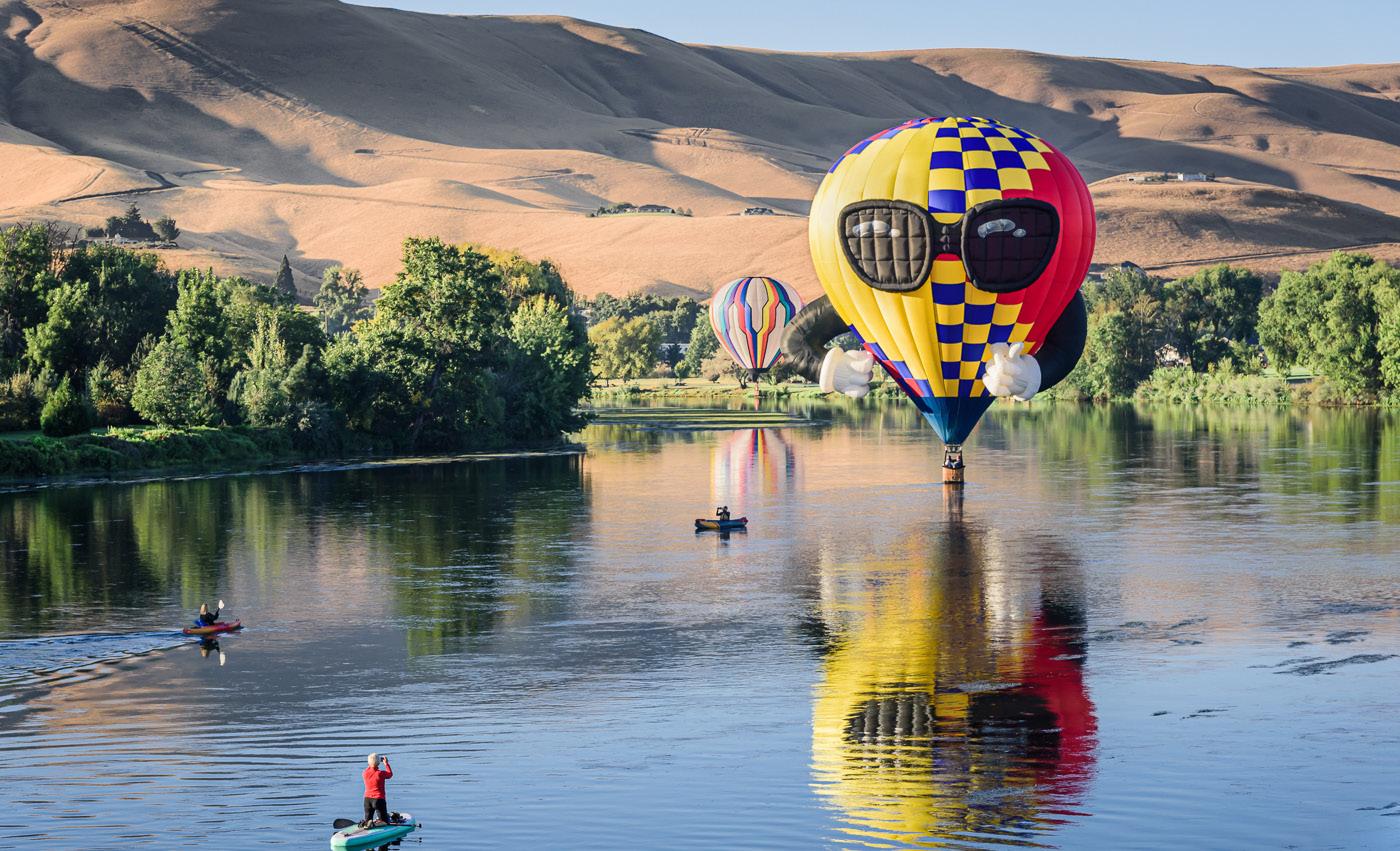
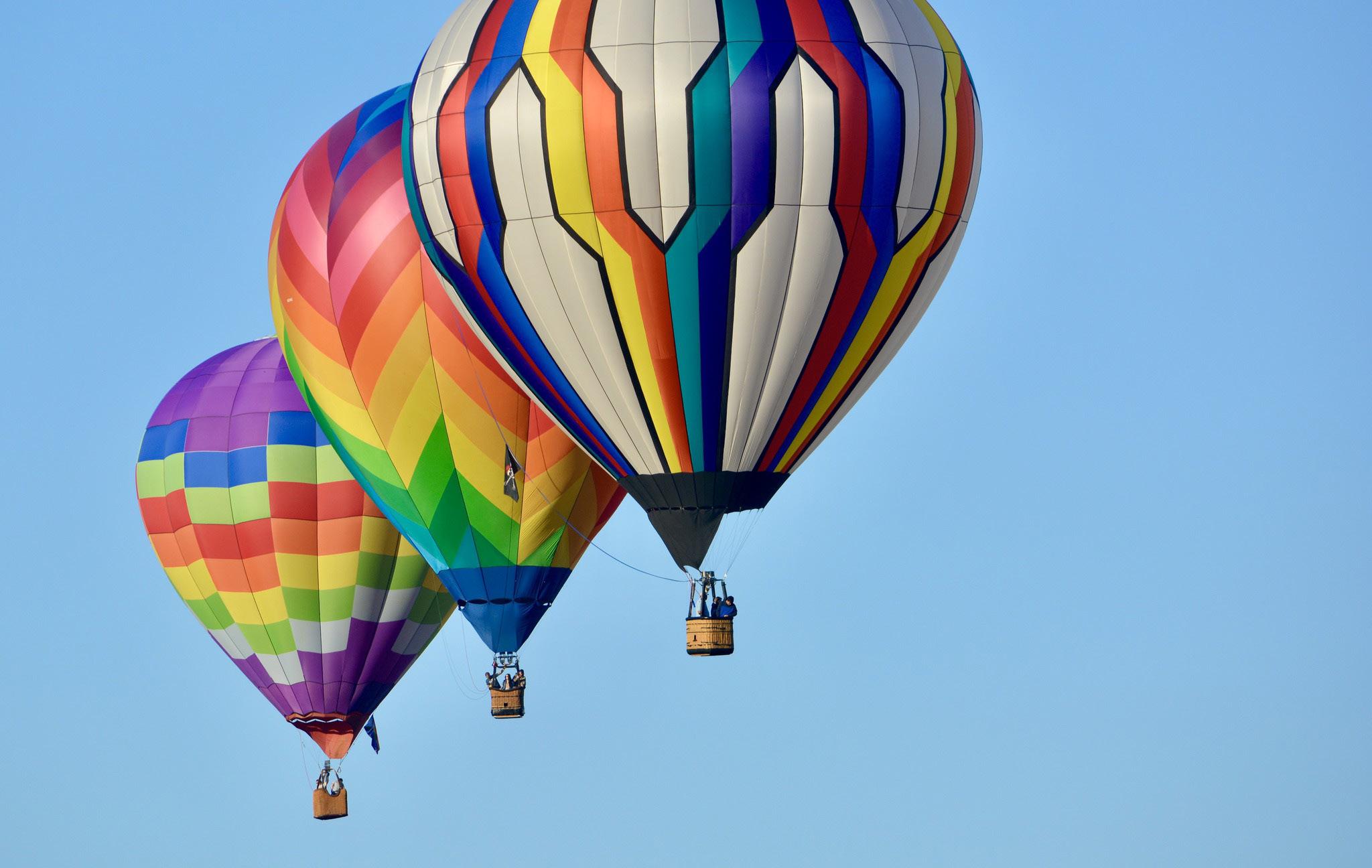
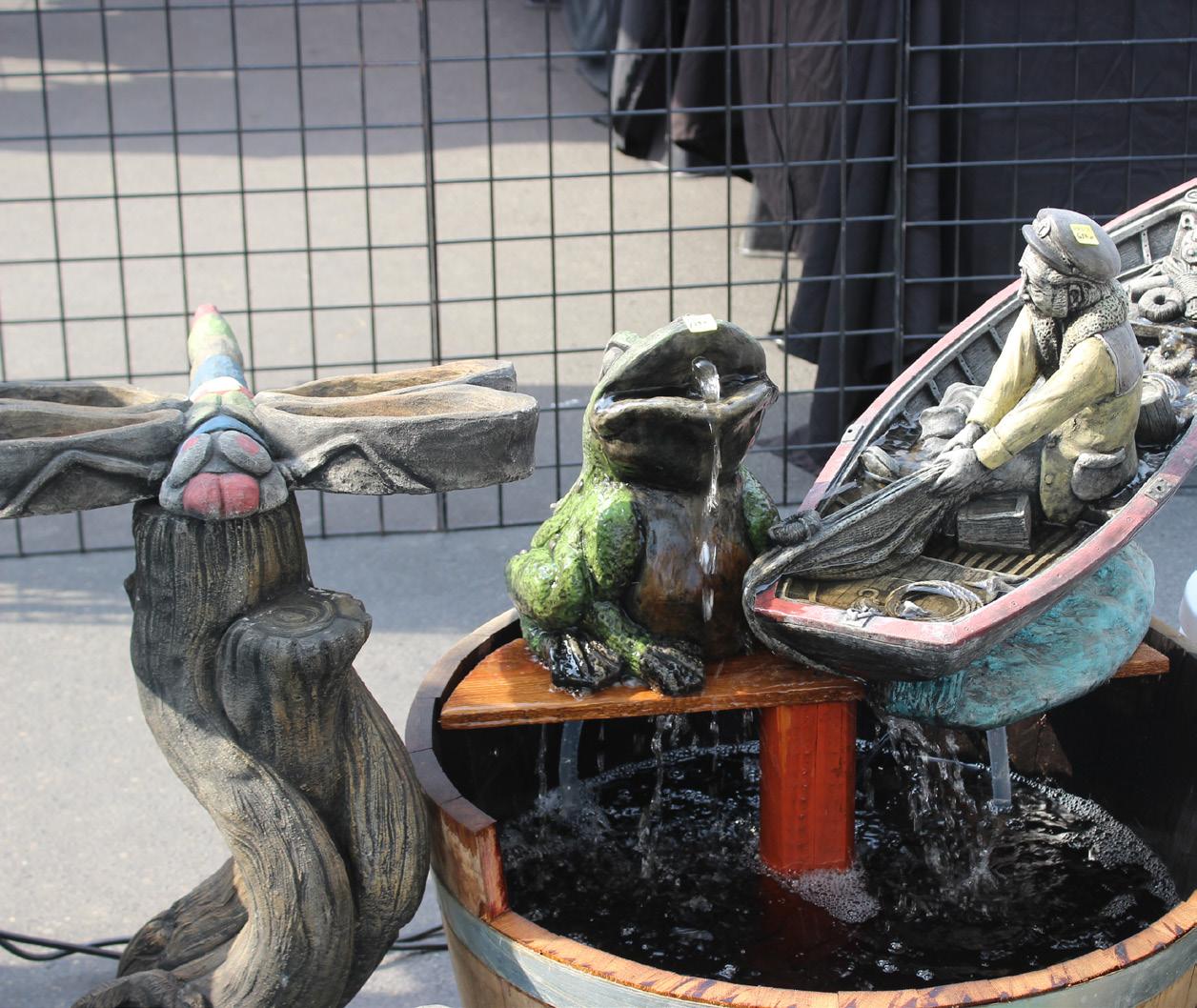
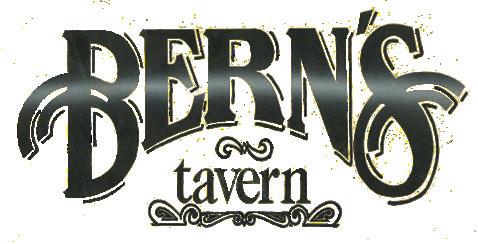
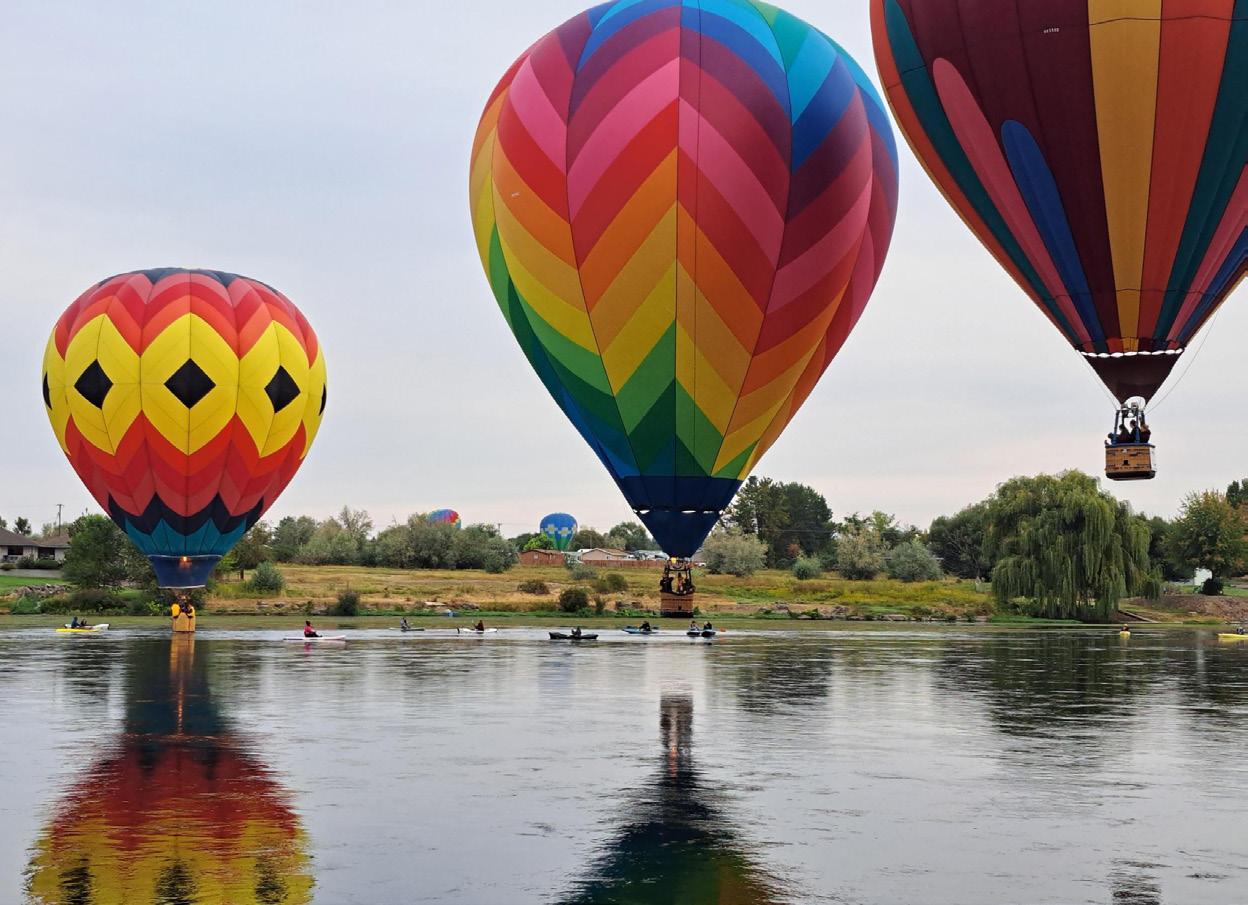


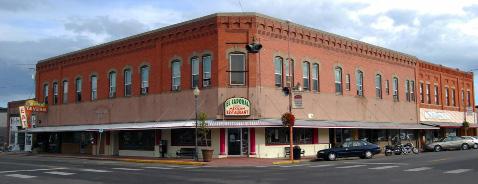
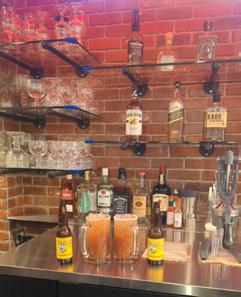


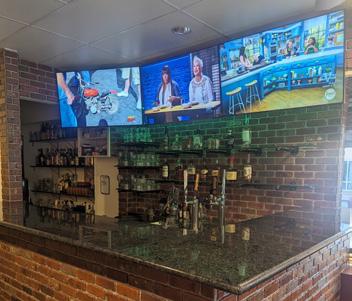



The Bram Brata Steel Drum Band will provide music. Night Glow is sponsored by PMH Medical Center and the Milne Kid Zone to entertain the kids out at Night Glow, while the balloons prepare to light up.
for warm days and fair winds that will allow for everyone to see and enjoy the hot air balloons!
We are looking forward to a great rally this year and are very thankful that Tim Gale has accepted our invitation to be our Balloon Meister again this year. Sunrise launches are planned for Sept. 27, 28 and 29 at the Prosser Airport, weather permitting. A Night Glow show is planned for Saturday, Sept. 28 at Art Fiker Stadium, and the stadium opening at 6:00 pm.
We encourage the public to grab their cameras and come out and enjoy the morning launches. The beauty of the balloons floating over the Yakima River is a sight that everyone should see.
The Great Prosser Balloon rally is a very special event with a lot of tradition and history. Every year, it introduces a new generation of kids to hot air ballooning and sparks so many great questions and interests. We appreciate the support and effort throughout the community to help make this a wonderful event for Prosser every year.
As we have our 35th event, remember the Great Prosser Balloon Rally is an all-volunteer organization, and we only have this event with great volunteers, generous sponsors, and willing pilots to make the rally come together. If you enjoy this event, consider contacting us and help volunteer next year, so we can continue this free event for all of Prosser and the lower Yakima Valley!
If you see a balloon pilot, or one of the rally sponsors please tell them thank you for helping bring this wonderful event to town.
All the sun rise launches, and the Night Glow events are dependent upon the weather. Chairman, Morgan Everett
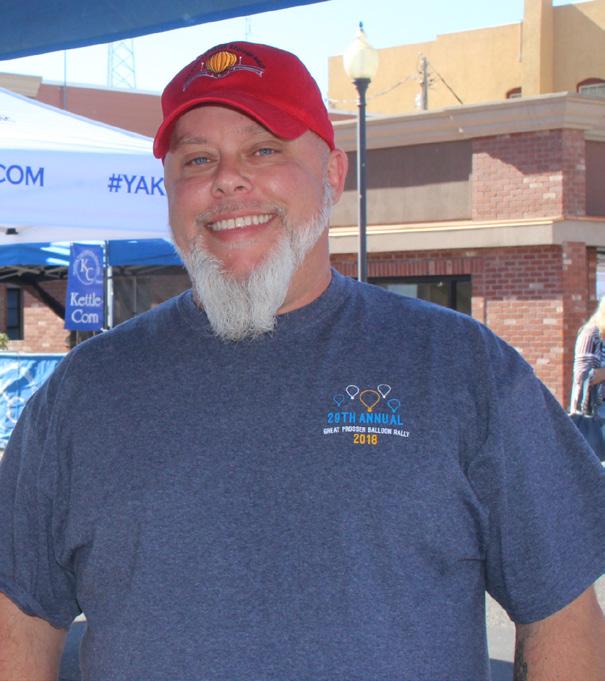
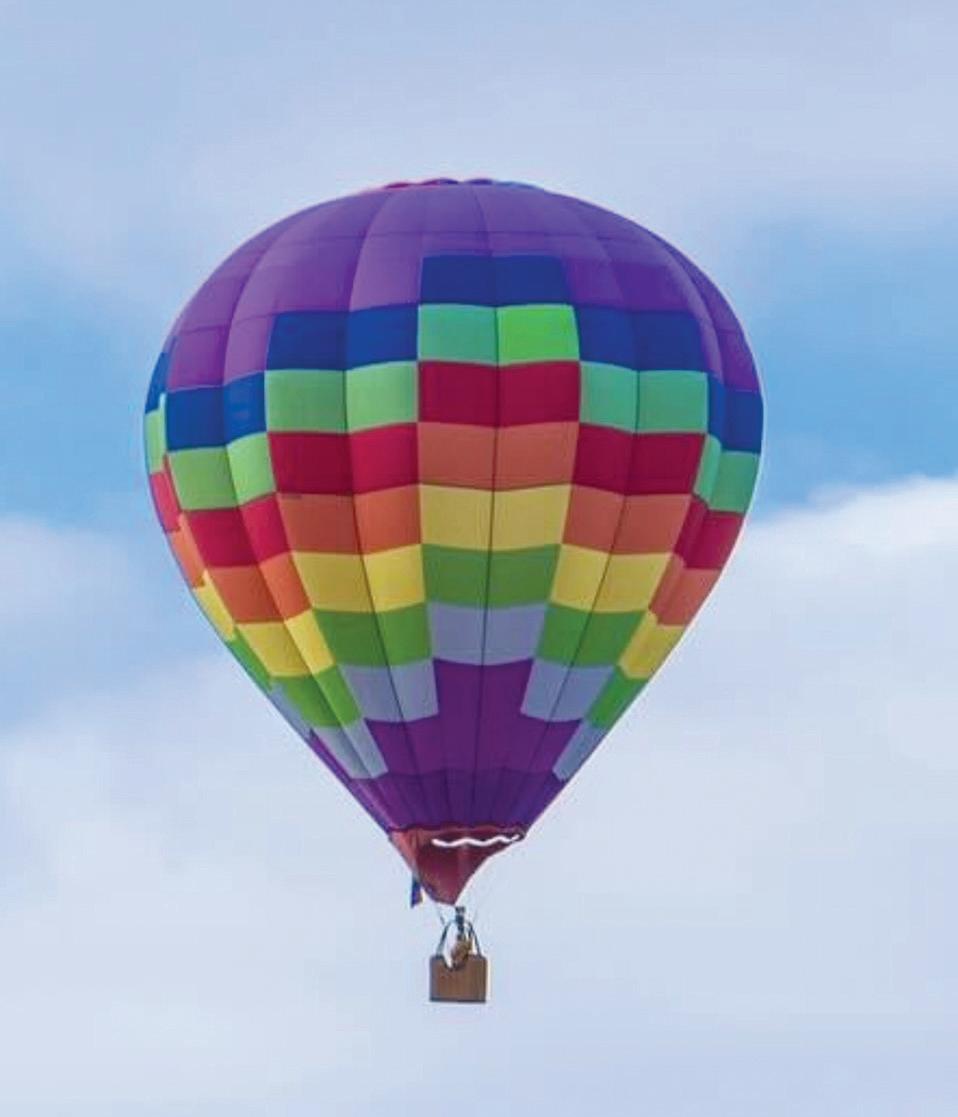
Pilot Name: Canna Walter Home: Lynnwood, WA
Balloon Name: HAPPYANUNOIT (Happy and you know it)
Sponsor: Fun Flyer
Balloon Description/History: Rainbow Colored first
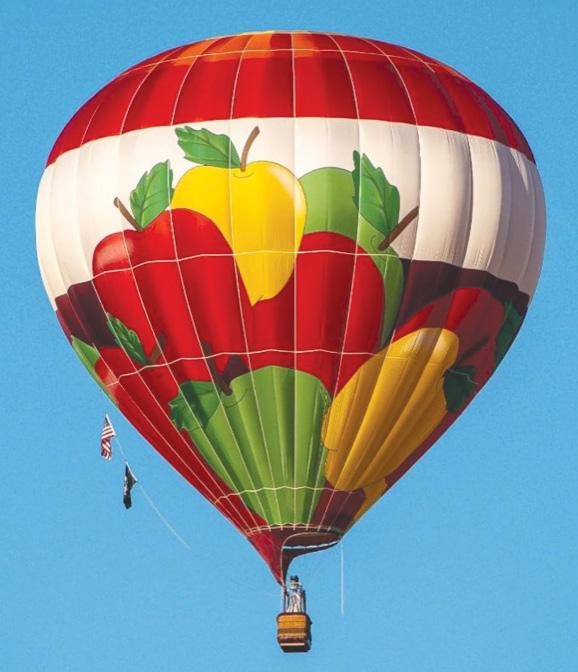
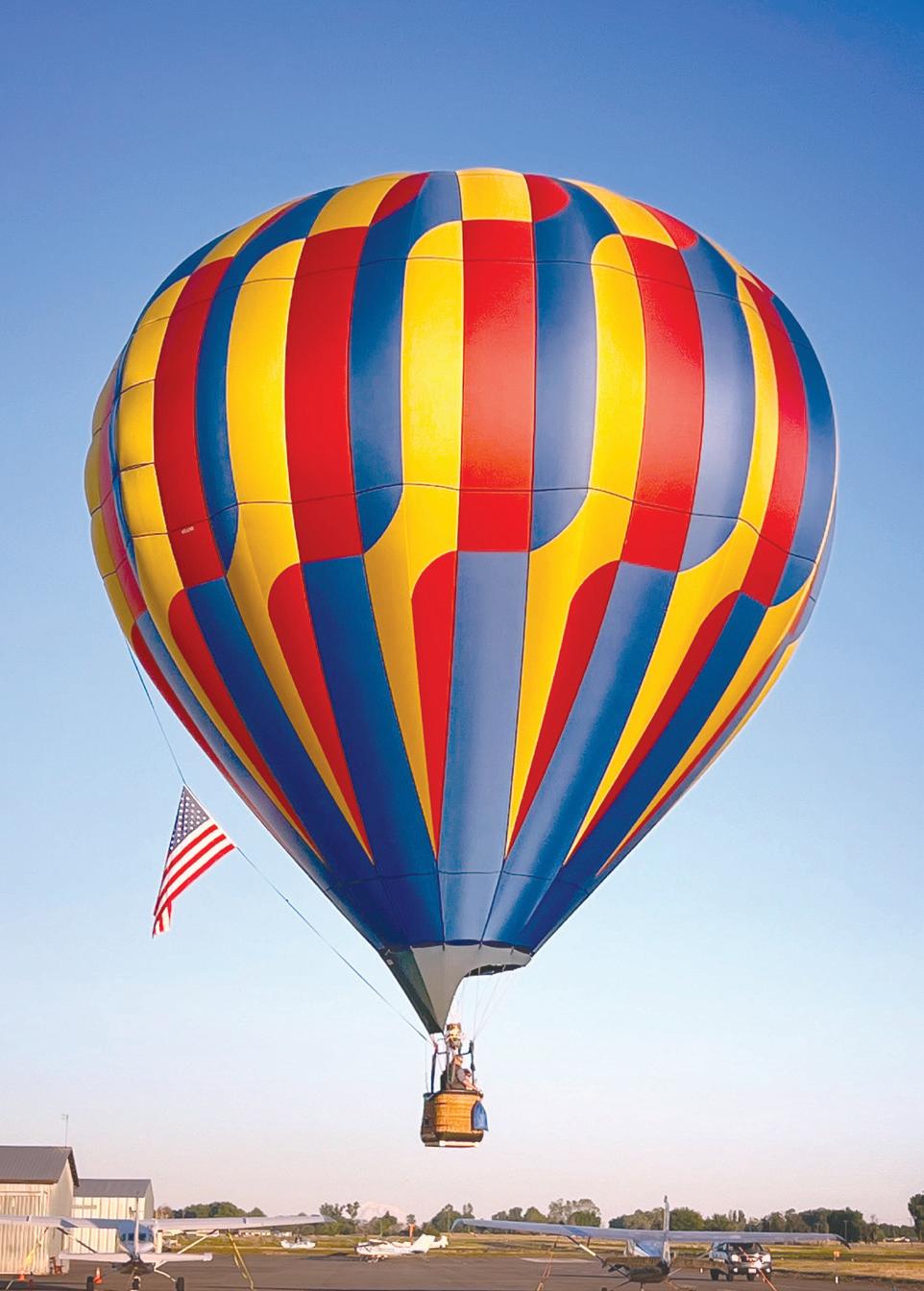

and loves the family atmosphere in the ballooning world. Soon after deciding to become a pilot, a beautiful balloon became available and Wiser and his wife, Sandy, purchased it immediately. “Fruit
Flies” is a 105,000 cubic foot balloon manufactured by Aerostar. You’ll enjoy watching the fruit soar over your head.
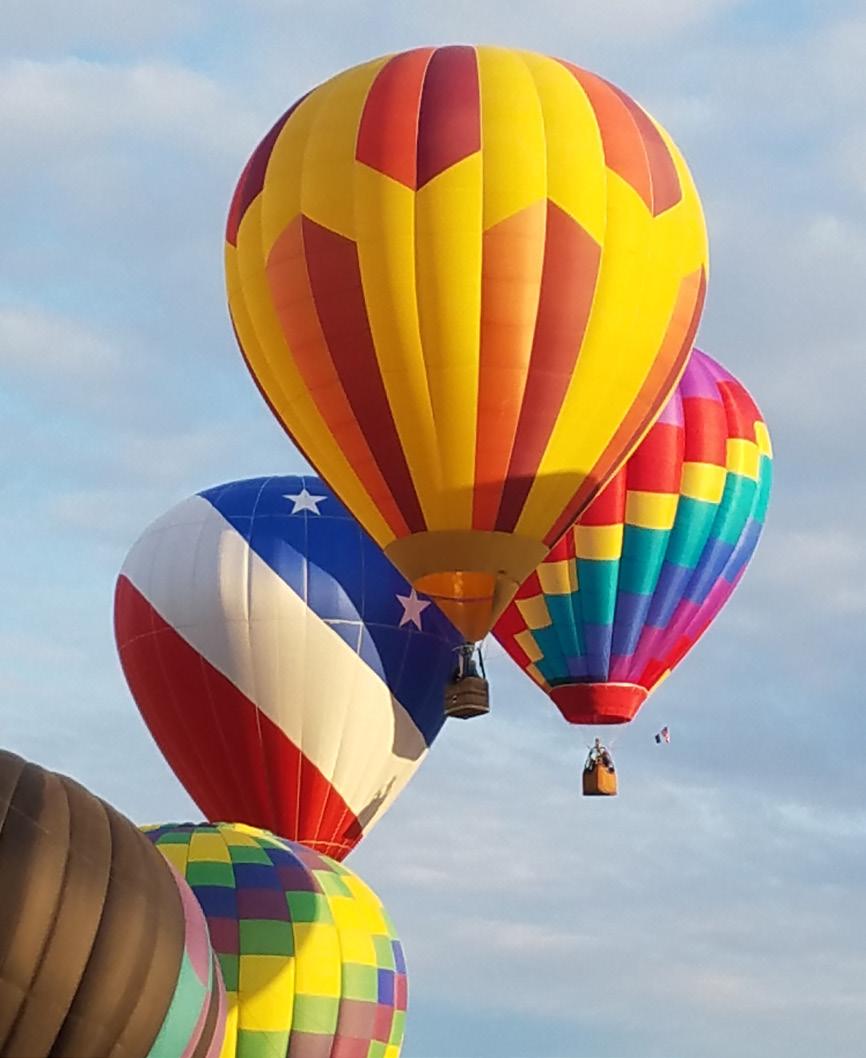

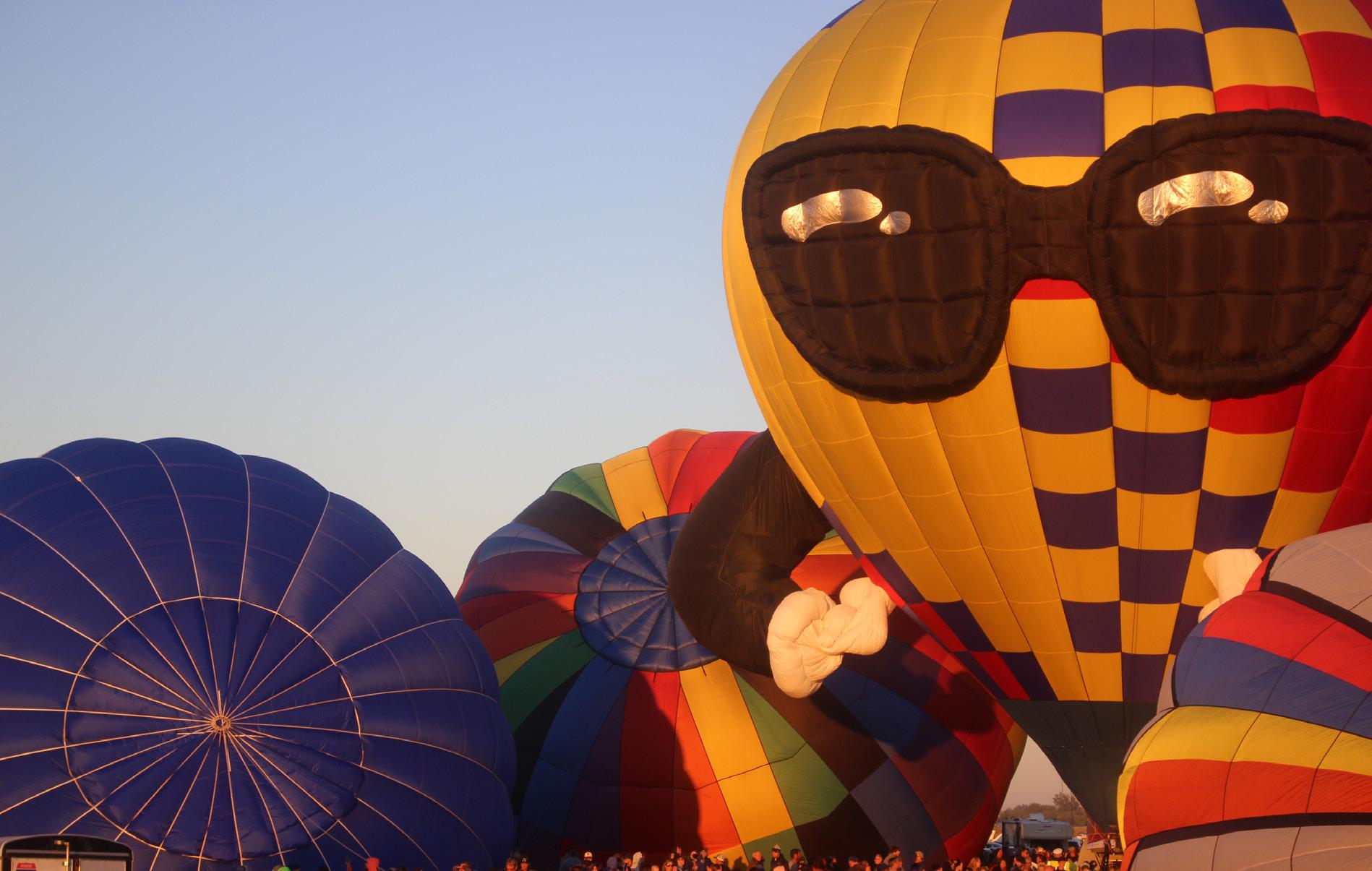
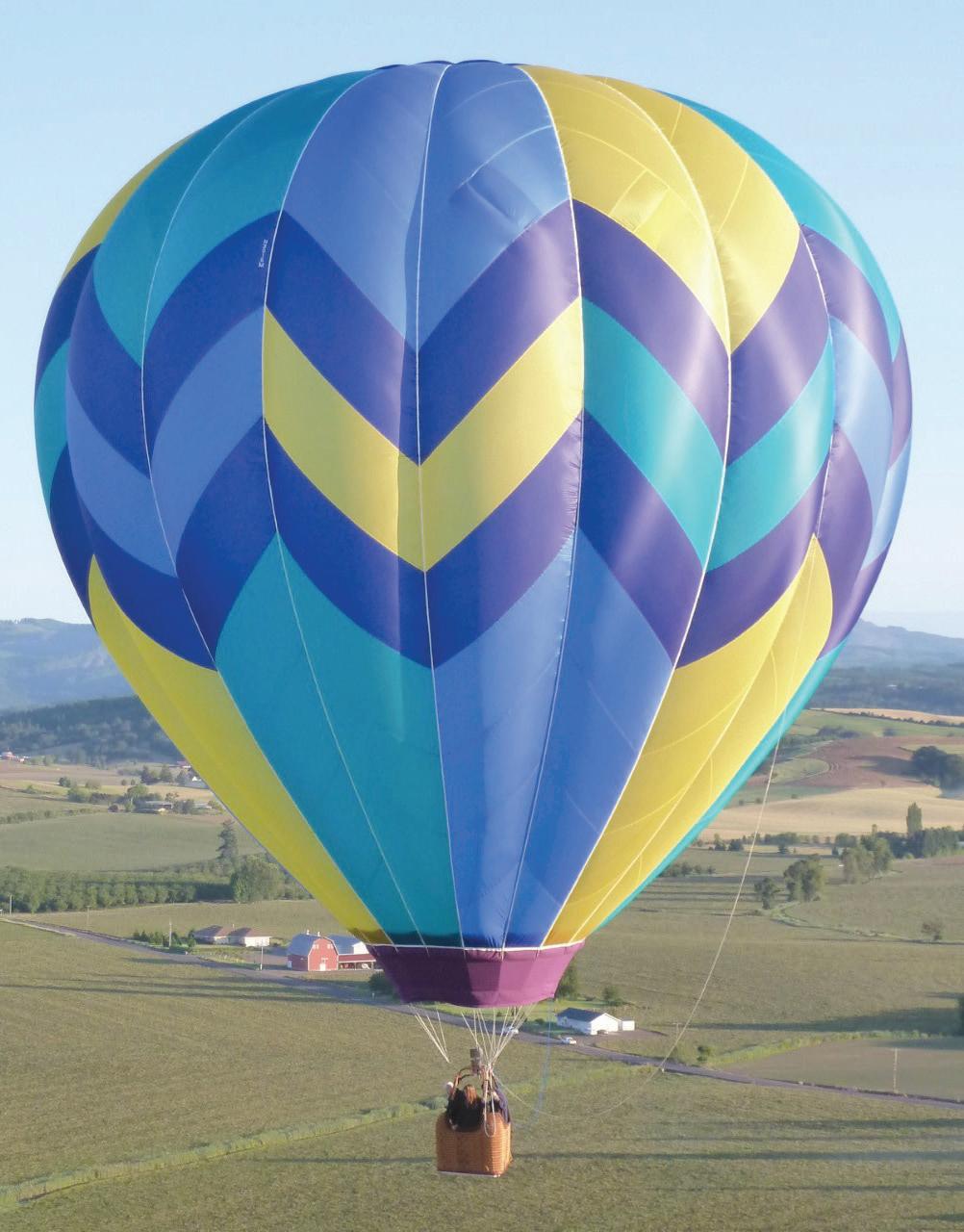
Balloon Description/History: Bright blue, teal and yellow with a dark blue chevron pattern
Started in Ballooning: 1978 first balloon ride, began crewing and student pilot. 1983 Private Certificate. 1988 Commercial Certificate. 1994 Gas Balloon Rating.
Interesting Facts: Koh Murai worked as a launch crew, launch master and consultant for several trans-global balloon attempts. Murai received the following awards:
1997 – Excellence in Ballooning from Pacific Coast Aeronauts
1999 – Presidents Award from Balloon Federation of America 2009 – Directors Award, from The Great Reno Balloon Race 2012 – Sportsman’s Award, from the Great Reno Balloon Race
The people that you meet, pilots, crews, passengers and spectators are still the main reason to fly. The joy of flight is always there but people make the difference. Along the way Murai has been able to do some
balloons as well as work on the technical, planning and execution side of distance, duration
and a grandson.



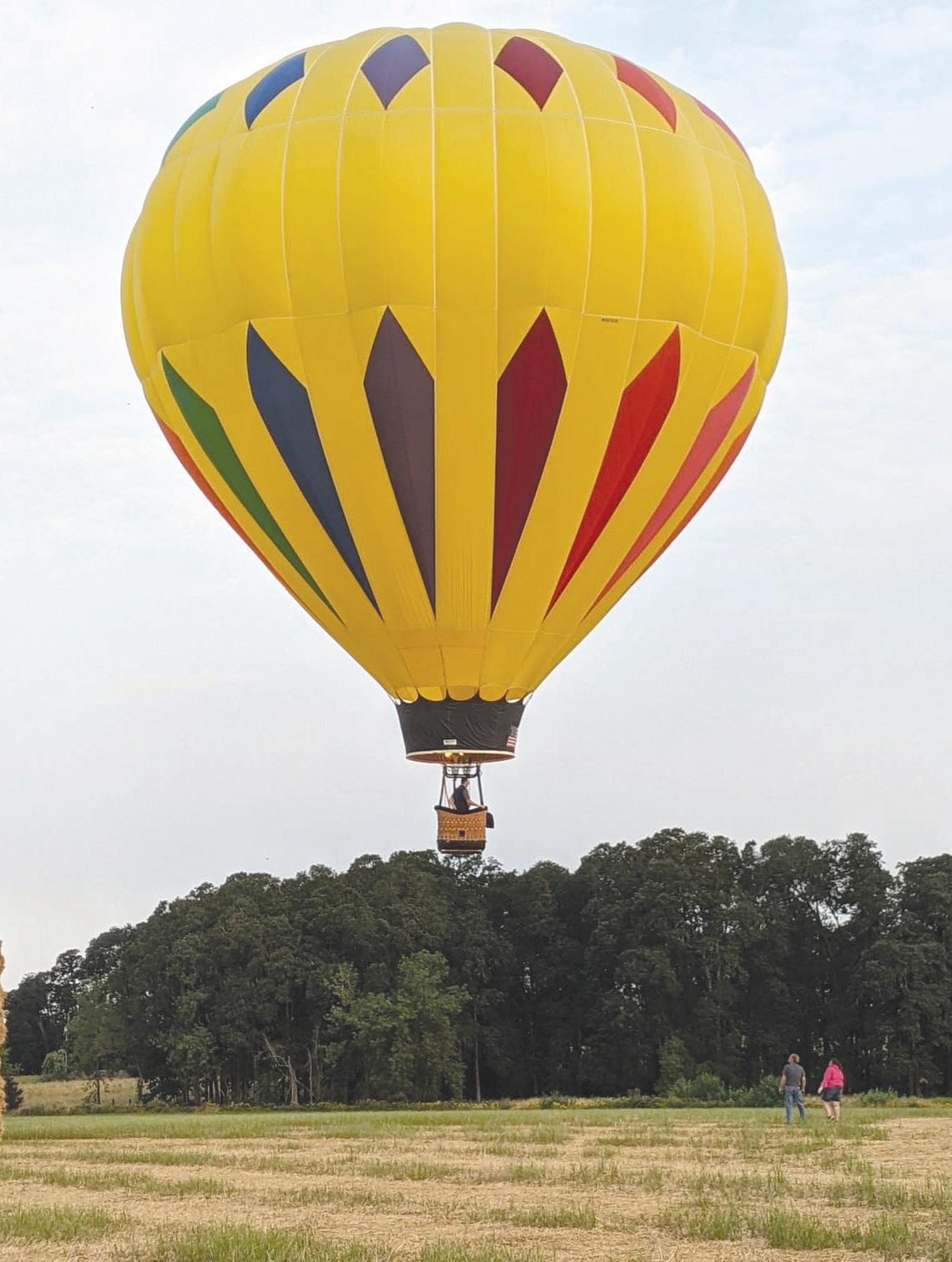
Home: Seattle, WA
Balloon Name: Sunny Rainbow
Sponsors: Fun Flyer
Balloon Description: Yellow with chevrons in the color of the rainbow.
Ballooning in Prosser: This is Jessica’s third year in Prosser, and Ryan’s first.
Bio & Facts: Jessica Geib fell in love with ballooning while teaching in Gallup, NM. Her best friend dragged her out Saturday morning to the 2015 Red Rock Balloon Rally. Geib is NOT a morning person, so when she was up extra early that Sunday morning, way earlier than she needed to be to go crew, Geib knew she had found something she is really passionate about. Geib began her journey as a student pilot that very next spring and bought her beautiful balloon Sunny Rainbow in summer 2017. Life as a teacher is challenging and extremely busy, so it wasn’t until this summer, three years after moving home to the Pacific Northwest, that with the help of her husband Ryan, the amazing Mandy Johnson, and all of her wonderful PNW balloon family, Geib finally got her private pilot certificate! Geib loves flying, but her favorite part of ballooning is getting to spend time with her ever expanding balloon family! Geib’s balloon Sunny Rainbow is a 1991 Aerostar RX-8 flown over a very unique CWE basket made by Raven Europe.
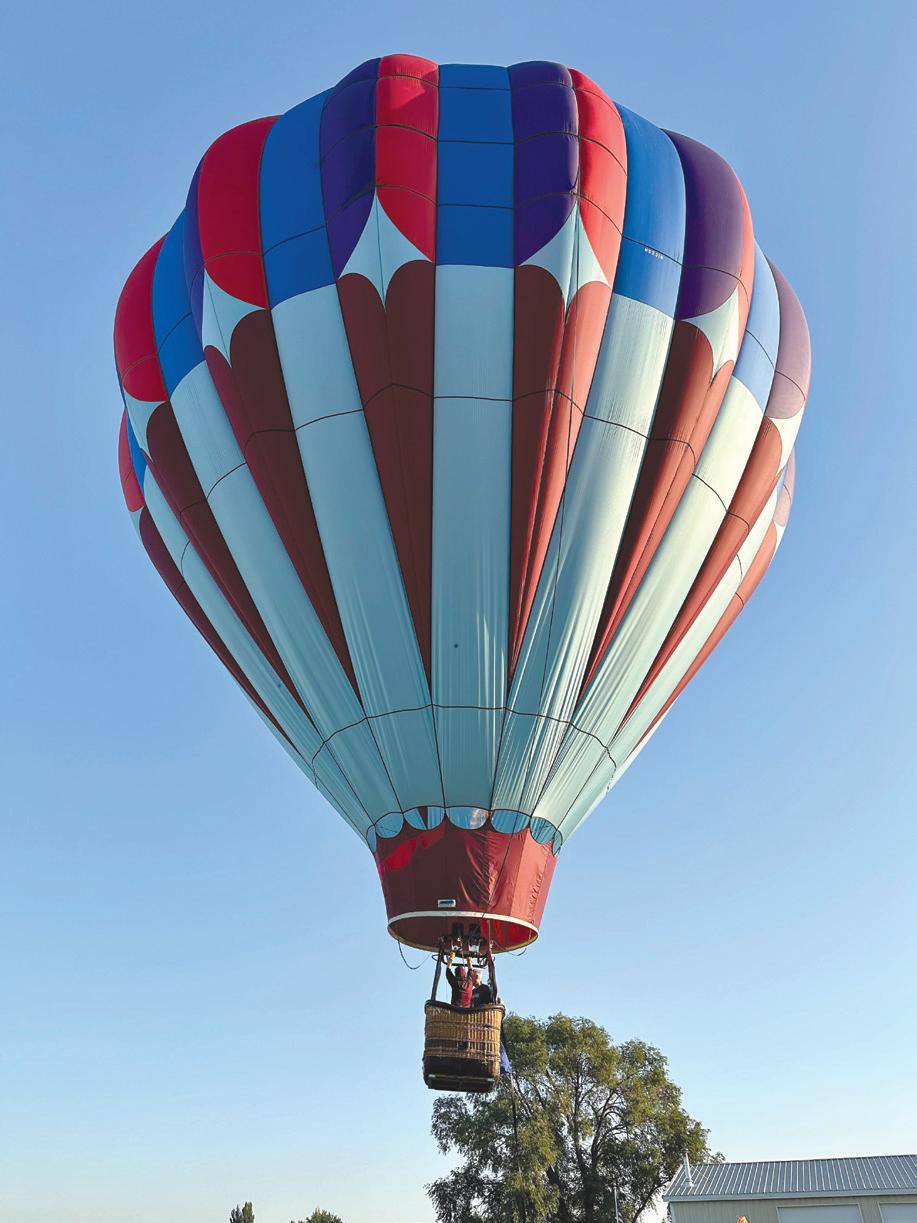




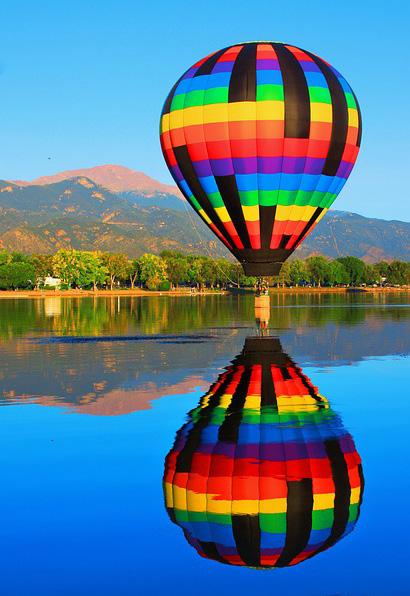

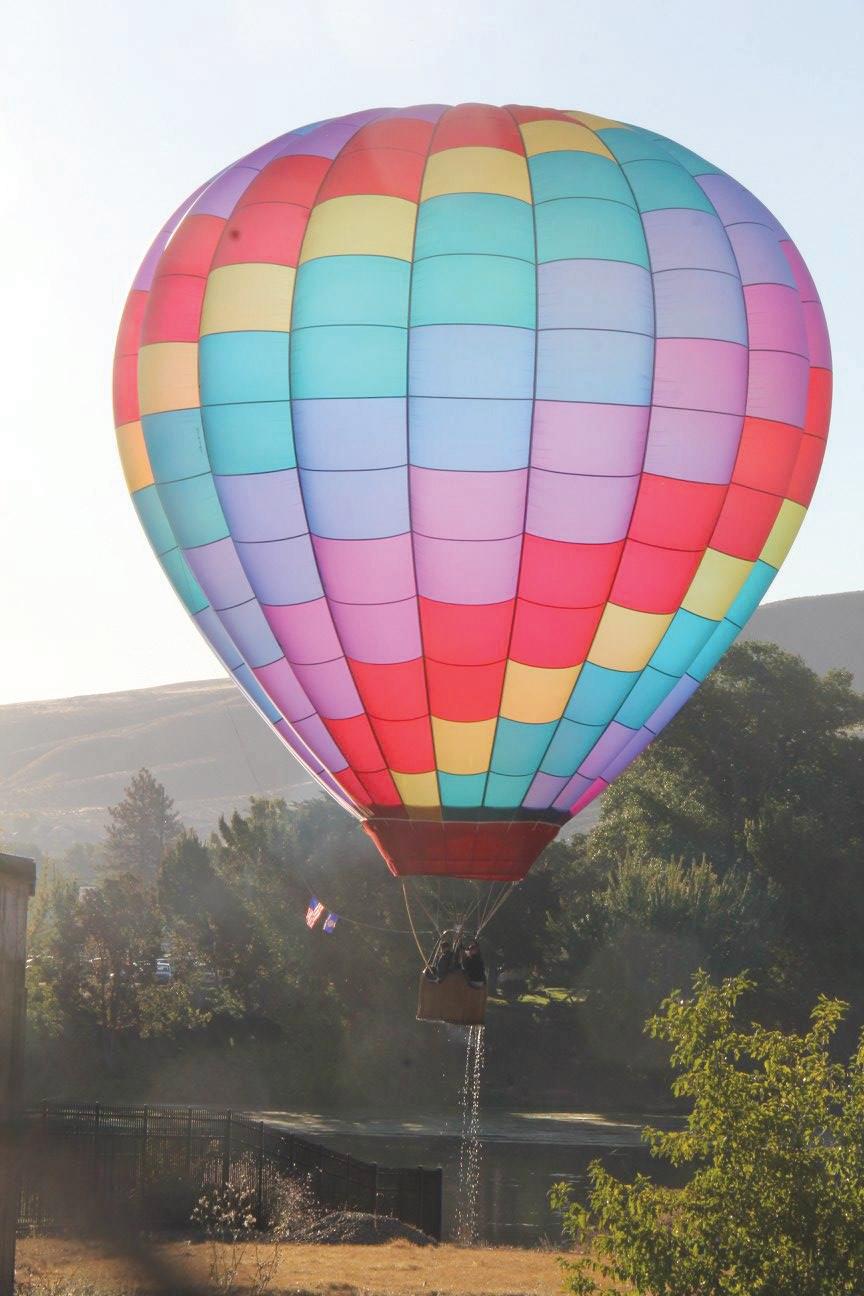
Tim Gale
Home: Albany, OR
Balloon Name: Knight-N-Gale
Sponsor: Port of Benton
Sponsor Services: Local Port District promotes new businesses and tourism
Balloon Description/History: Knight-N-Gale is a re-skin of a former balloon, Checkmate. The heavier elements of the envelope, cables and ropes, were retained. Only the outer fabric was replaced. Checkmate’s last flight was in Prosser 2014. That envelope was the second of the same design. The original Checkmate design was flown in 1980 in Boise, ID. Started in Ballooning: 1979
Ballooning in Prosser: Since 2007
Interesting Facts:
• We started for fun, then ran a weekend ride business in the 1980’s. Our activities since then have been mostly for fun flying and organized events such as The Great Prosser Balloon Rally. We’ve also been active in balloon safety education and Shari has been the editor for the Willamette Aerostat Society newsletter for many years
• We’ve taken three generations of the Montgolfier family, The very same family that started hot air balloons in 1783. Tim has a penchant for water dipping, known as splash & dash and Prosser is one of the great opportunities.
• Tim is our Balloon Meister this year for the Great Prosser Balloon Rally!
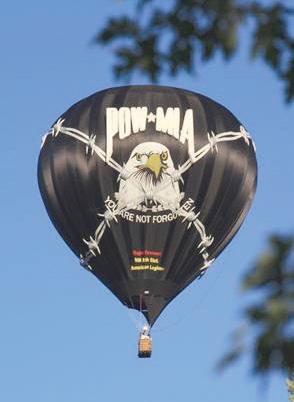
Home: St. Cloud, MN
Balloon Name: Freedom Flight V
Sponsor: Chukar Cherries
Balloon Description: Black balloon with eagle and POW and MIA logo.
Ballooning Organization: Freedom Flight V is part of Freedom Flight, Inc. is a non-profit, educational corporation established in 1988, that seeks to honor and increase the awareness of POW/MIA issues. Our organization is made up of dedicated volunteers who give their time, talent and money to fly three POW/MIA hot air balloons at various events across America and the world.
Ballooning in Prosser: This is Luke’s fourth time joining us at the Great Prosser Balloon Rally, coming all the way from Minnesota.
Interesting facts: Luke Cesnik started flying when he was 15 and after a stint in the Air Force he used the GI Bill to get his Commercial, Instrument, Multi-Engine & Flight Instructors Rating. He has been flying for 51 years. Cesnik took his first balloon ride in 1990 and decided he could do this too. After flying balloons for the past 28 years, he has many wonderful memories, but one really stands out in his mind as one of the best: The time he flew the Pilot and Navigator from the same B-52 that was shot down over Hanoi during the Vietnam War. They were the only ones who survived, and they were both captured and held as POW’s at the infamous Hanoi Hilton prison camp and here they were many years later in the POW balloon with him as they dedicated the flight to the ones they lost that day when they were shot down.
Another flight that stands out is when he got to see the snow fall UP. He was flying in Hudson, WI. While they were flying it began to snow huge flakes and the visibility started to come down so he picked a good place to land and began his decent and as he did, they began descending faster than the snow was falling and it looked like the snow was falling up. One of the passengers said that she felt like she was in a snow globe and said it was like floating in a dream.
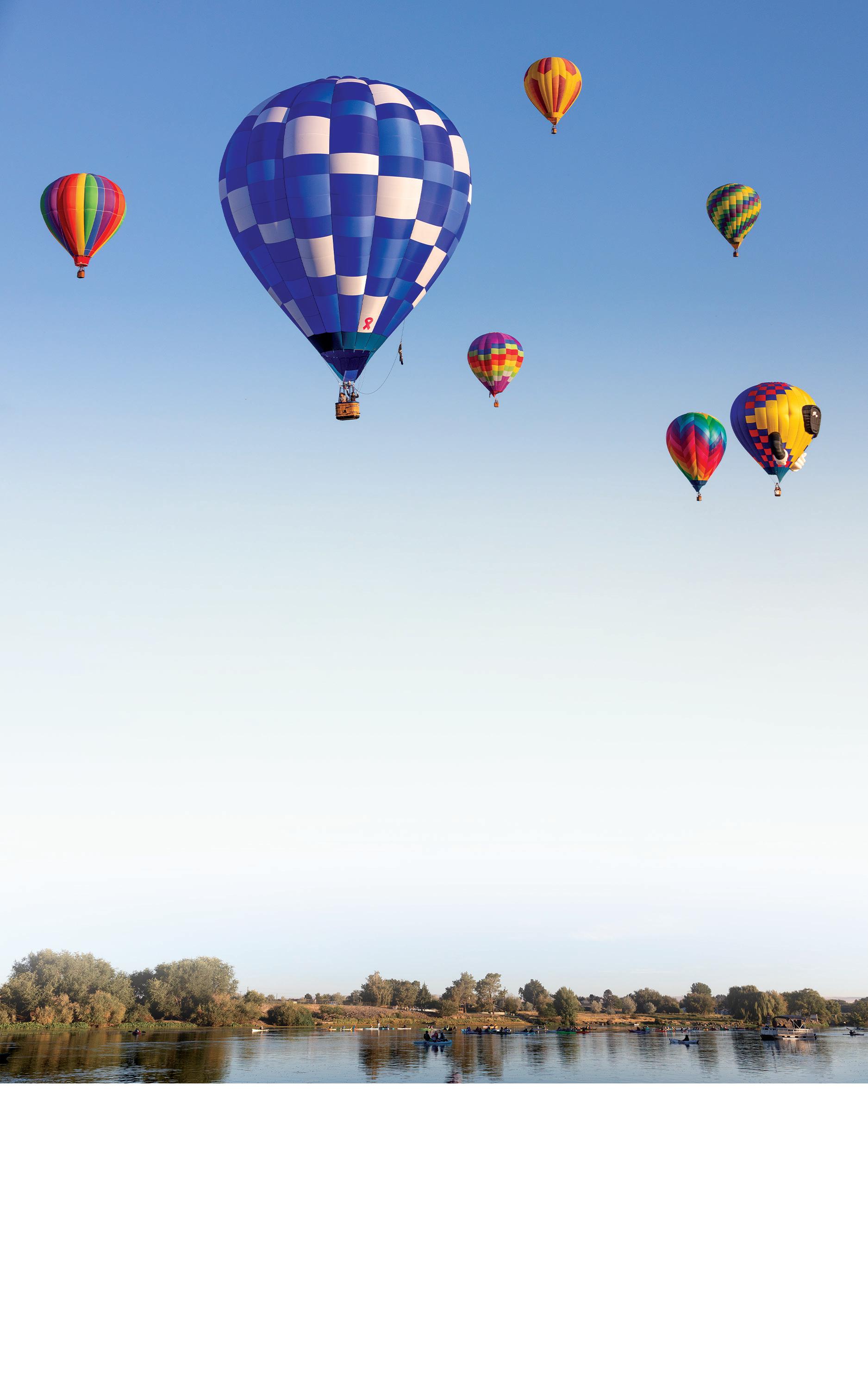
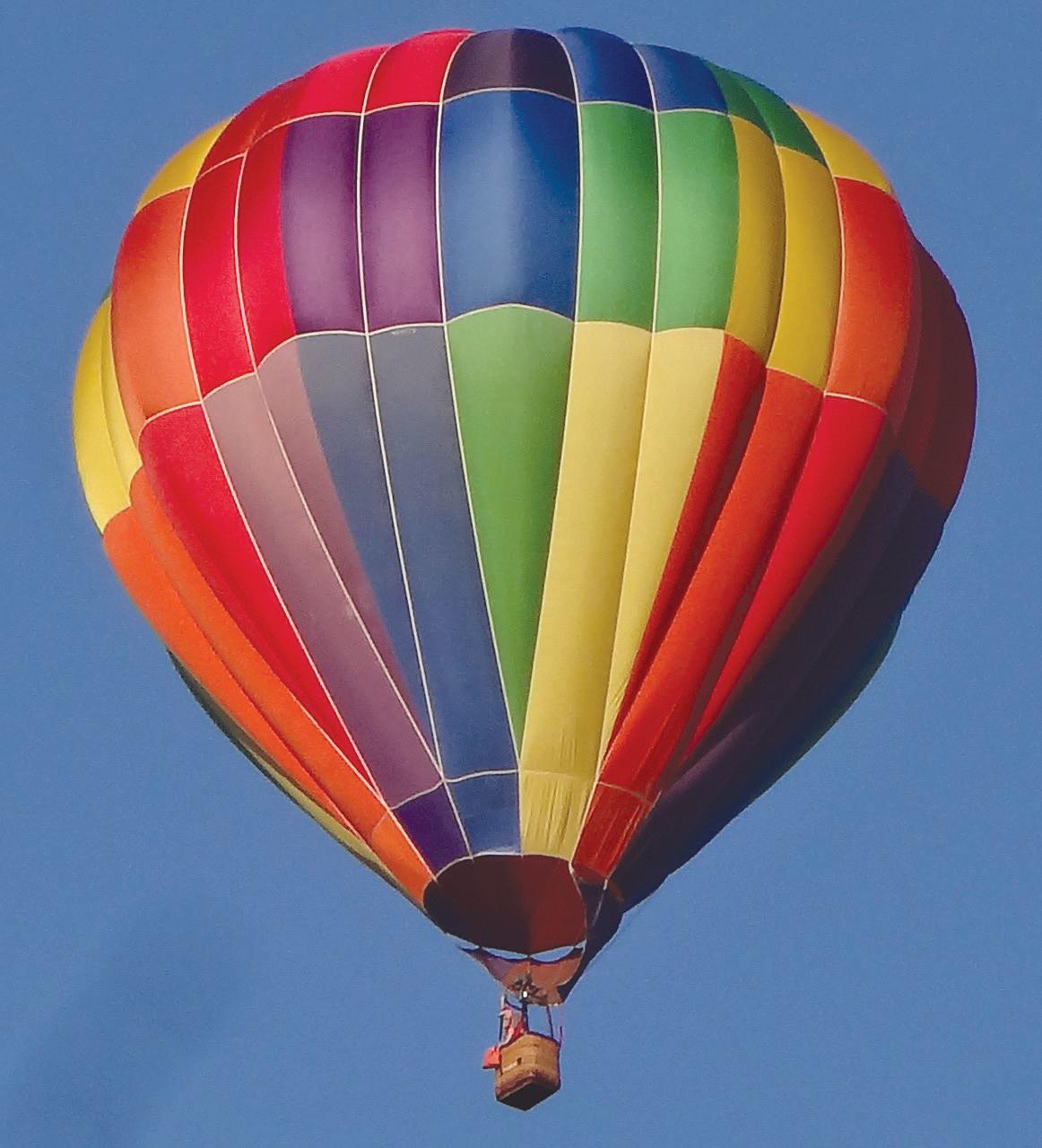
Balloon Description/History: Three tiers of rainbow colors. This is the second balloon Dale has flown in Prosser. Up until 2015, he flew “The Outer Limits.”
Ballooning History: Dale Justice has been around hot air balloons for over 30 years. He started his pilot training in 1984. He completed the requirements and passed his private tests 25 years later, in 2009. He never gave up the dream of being a pilot during that time. He is flying the “La Jolla” balloon and has flown around the Willamette Valley and at dozens of balloon rallies in the Northwest. He passed his Commercial rating tests and received the “Aeronaut of the Year” award from the Willamette Aerostat Society in 2015. For Justice, giving others the thrill of flying in a balloon is a great pleasure. Often, it is their first flight, and one they will always remember. Justice also takes many pictures at balloon events and the pictures are always appreciated by fellow balloonatics.
May the wind welcome you with softness.
May the sun bless you with his warm hands.
May you fly so high and so well, God joins you in your laughter. And may He set you gently back again, Into the loving arms of Mother Earth.
Farmers and homeowners who invite the balloon pilots in the Rally to land in their fields are asked to place a white sheet or bedspread in their fields. The white is visible from the air.
The Annual Great Prosser Balloon Rally schedule is: morning launches on Friday, Sept. 27, Saturday, Sept. 28 and Sunday, Sept. 29. The committee will be putting a do not land map together prior to the event for the balloon pilots!
These areas will be designated as off limits for landing on a map given to each balloon pilot. Although most animals do not react to the quietly drifting hot air balloons, horses and big birds, such as emus and rheas, tend to react badly. The Balloon Meister suggests that persons who have horses may wish to place them in stalls.
Any questions about The Great Balloon Rally or “Please don’t land here” message may be addressed to the Rally Chairman, Morgan Everett, at (509) 713-2732
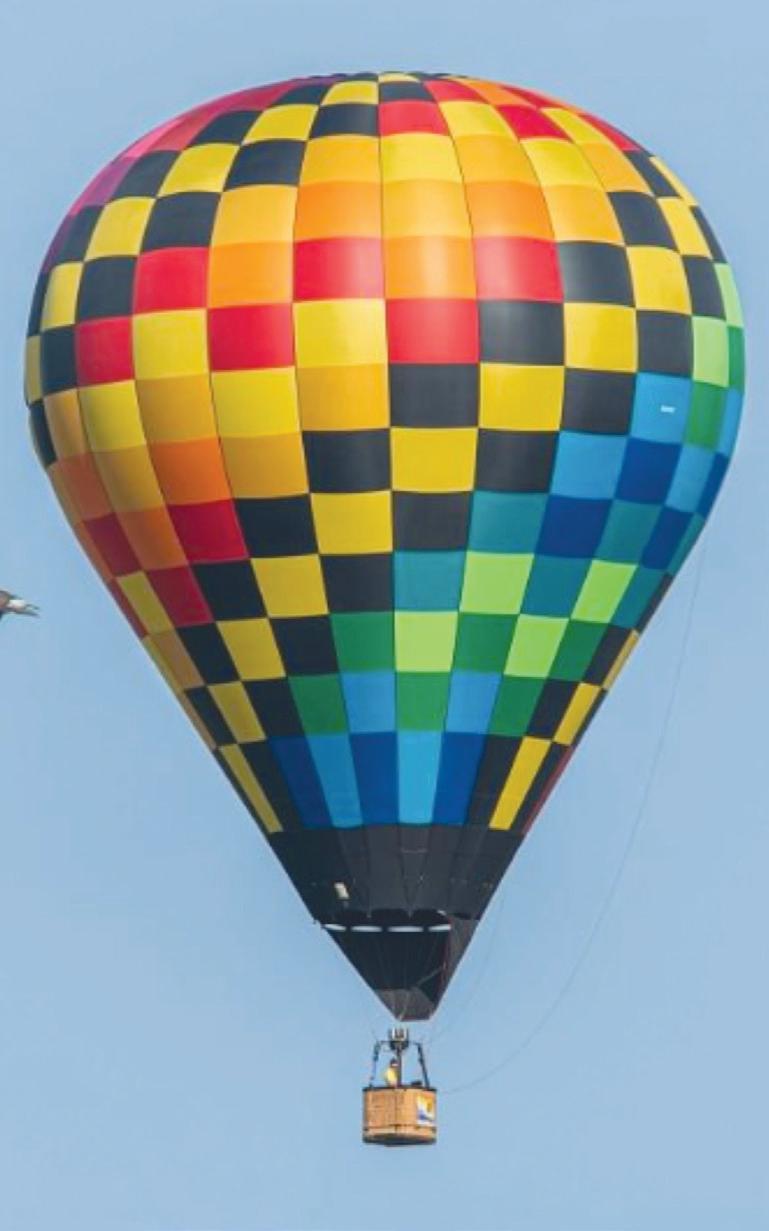
Sponsor: Brown’s Les Schwab Tires
Balloon Description/History: Multi-colored checked yellow, orange, red, blue and green Ballooning in Prosser: This is Kimberly’s first time flying in Prosser, please help welcoming her!
Interesting Facts or Ballooning History: We are excited to have Kimberly here at our event!
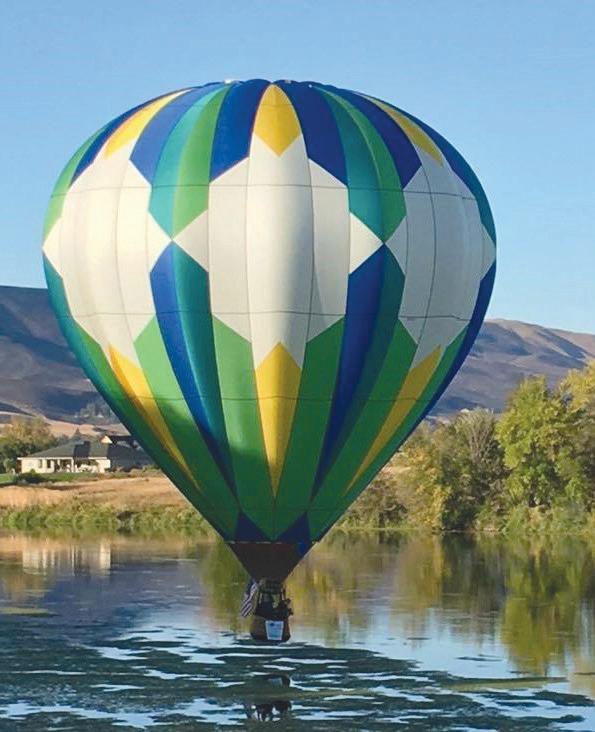
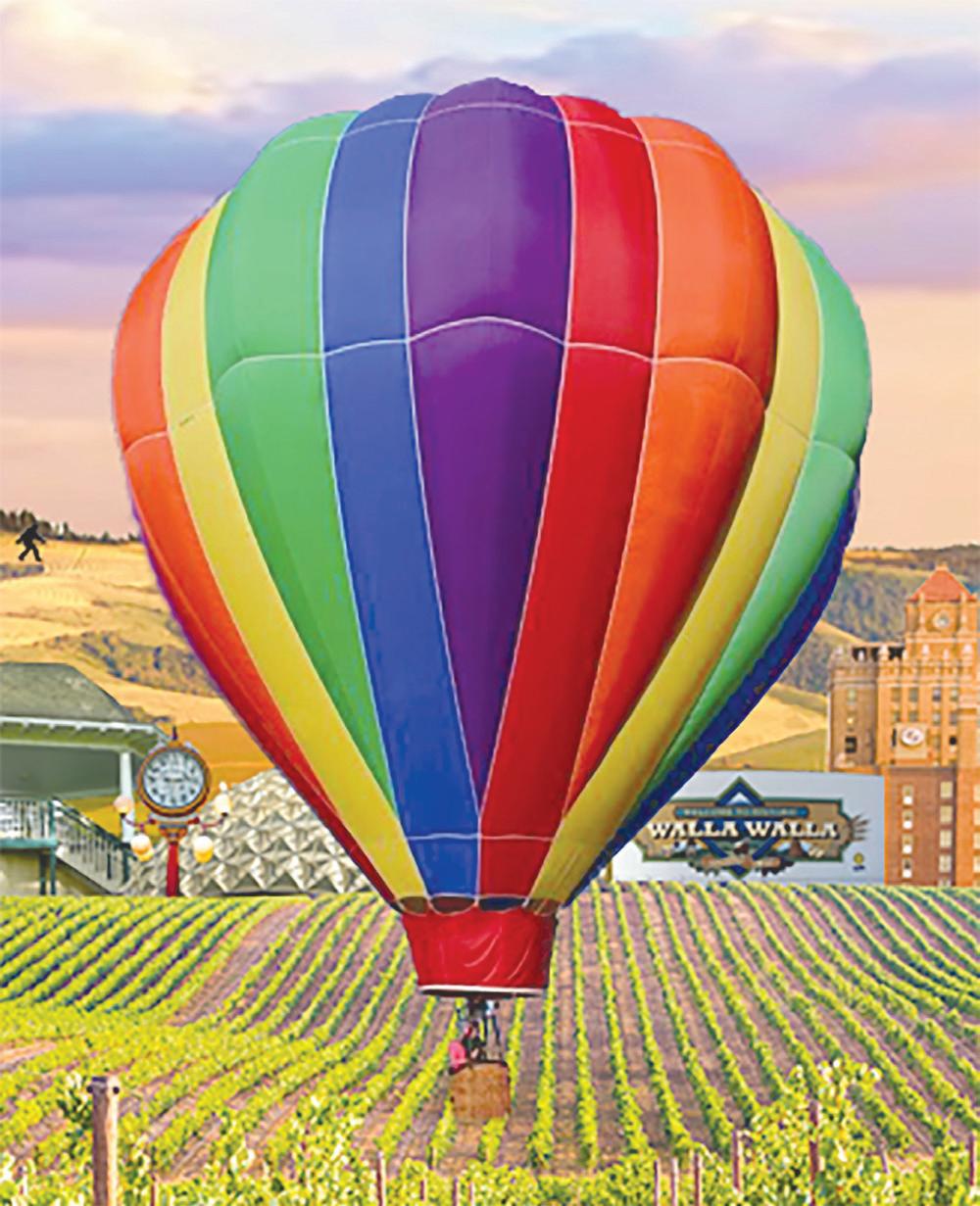
Started in Ballooning: Sherry White has always had a fascination for adventure! Over 25 years ago her family was invited to be members of the ground crew for an amazing pilot during the local Balloon Stampede. The excitement and pride in her young children as they looked forward to the annual event was such a blessing with a family team building experience. In 2020, she took flight lessons in Utah and acquired her Private Pilot certificate and is now studying for her Commercial. With three pilots in the family now, she looks forward to learning, growing and sharing the skies with her sons and the many pilots she has gotten to know in the ballooning community. There’s no limit to what you can achieve when you set your goal.
Dream It, Believe It, Live It!
Ballooning in Prosser: This is the second time Sherry has flown in Prosser and we are excited to have her and her son Devin White flying today!

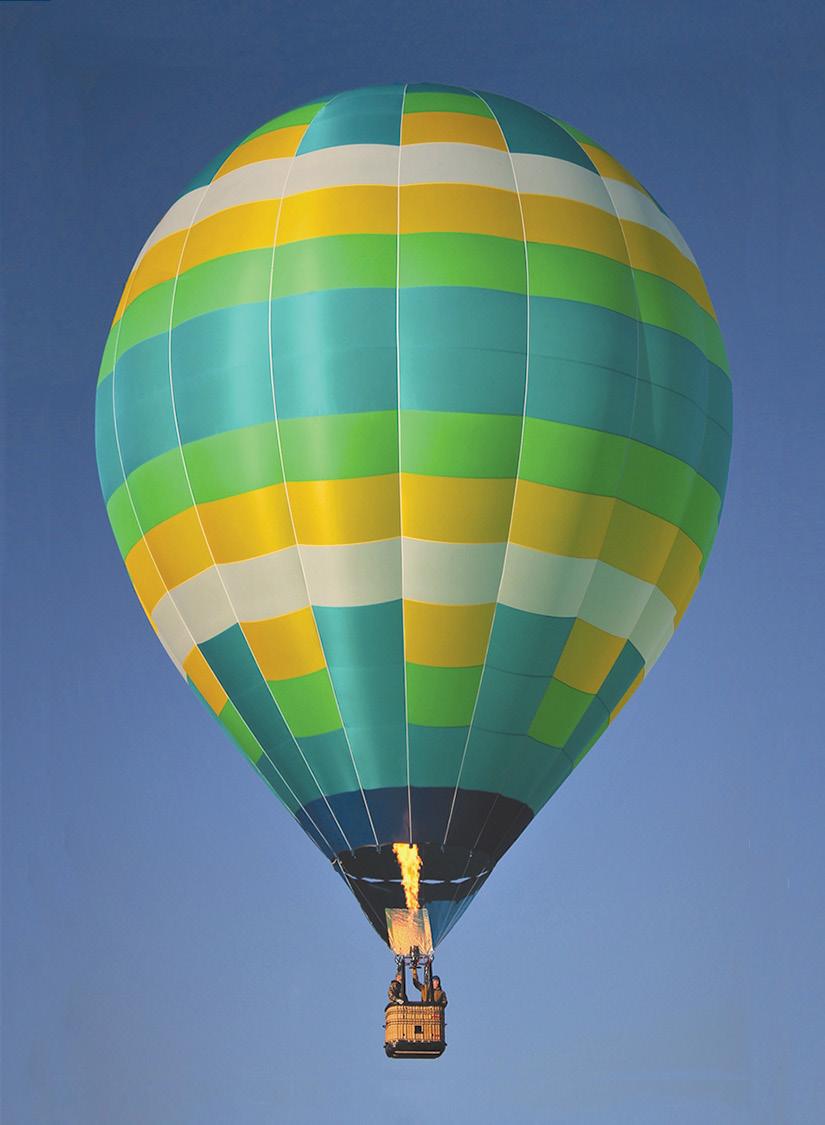
Pilot Name: Ron Cassidy
Homedale, ID
Balloon Name: Owyhee Heights
Balloon Description/History: Green, Blue Striped Sponsor: Valley Wide (Propane Sponsor)
Interesting Facts: Ron Cassidy started ballooning in 1989. He earned his commercial pilot certificate in 1990. In 1995 he became interested in building hot air balloons. His first balloon was completed and received an Airworthiness Certificate in 1997. Since then Cassidy has built many balloons and has mentored a number of builders on other balloon projects. Cassidy’s wife, Sue is also a commercial certificated pilot. The two of them live in Homedale, ID. Please stop and say hello. We are excited to have Cassidy back in Prosser again this year!
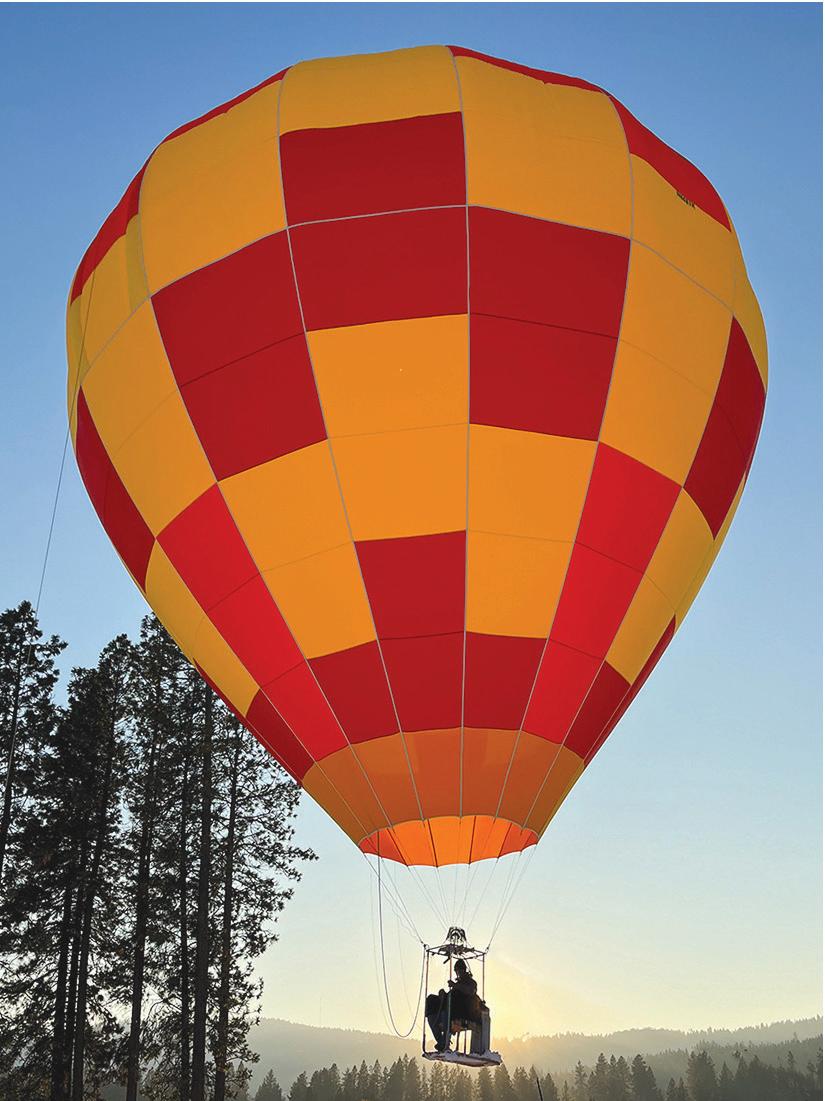
The do’s of hot air ballooning
DO: Plan ahead. A hot air balloon pilot should make arrangements for his or her passengers at least a day or two before the planned flight. The pilot has to get up early in the morning on the day of the flight to check the weather forecast. Unfavorable weather conditions such as too much wind will ground hot air balloon flights.
DO: Take note of where and when to meet the hot air balloon pilot on the day of the flight. Some hot air balloon pilots will pick up passengers at their homes, but most will not.
DO: Be on time. A hot air balloon ride may accommodate up to four or five people. DON’T be the passenger who delays the rest of the group.
DO: Shower. Passengers in a hot air balloon basket are in close quarters with one another.
DO: Take care of necessities before the flight. Eat, use the bathroom and make necessary telephone calls before launching.
DO: Check out other hot air balloon groups, if possible. Some will be ballooning for fun, while others are in a commercial pursuit. This is an opportunity to learn about hot air ballooning and make new friends as well.
Information from: Balloon Life 1996

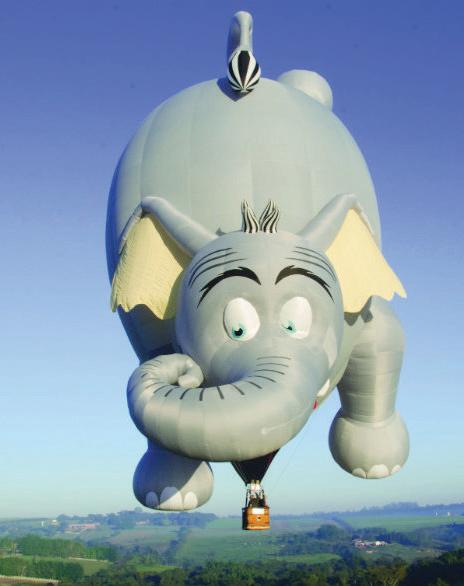

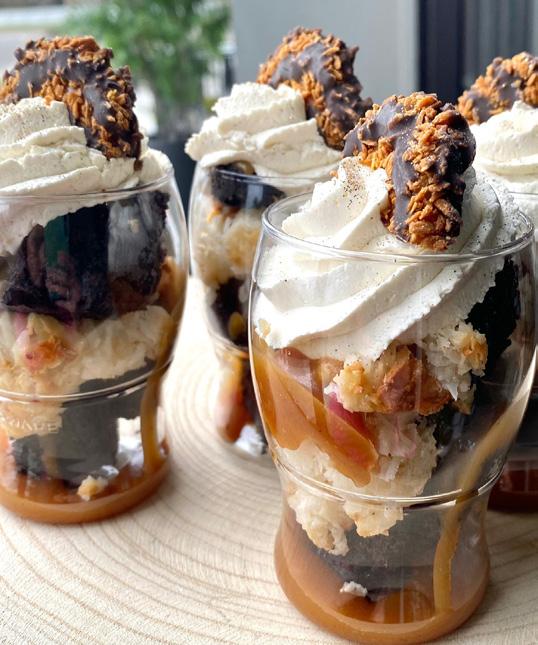
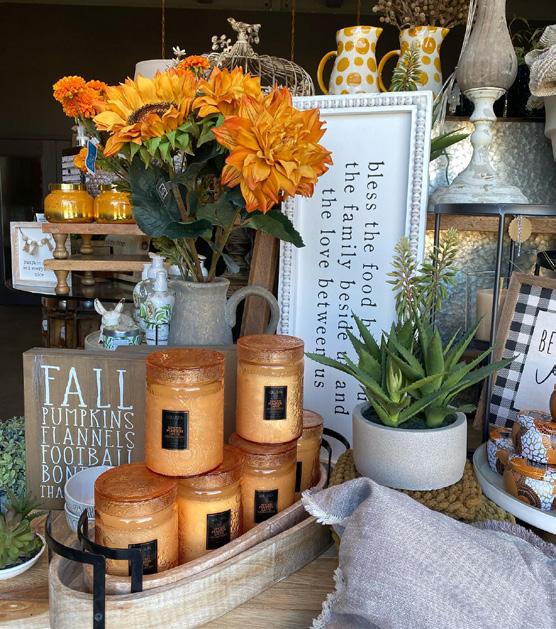

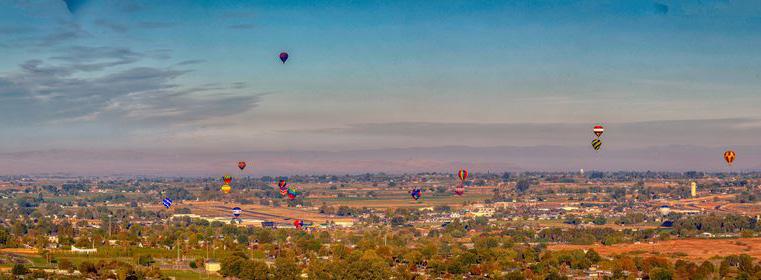









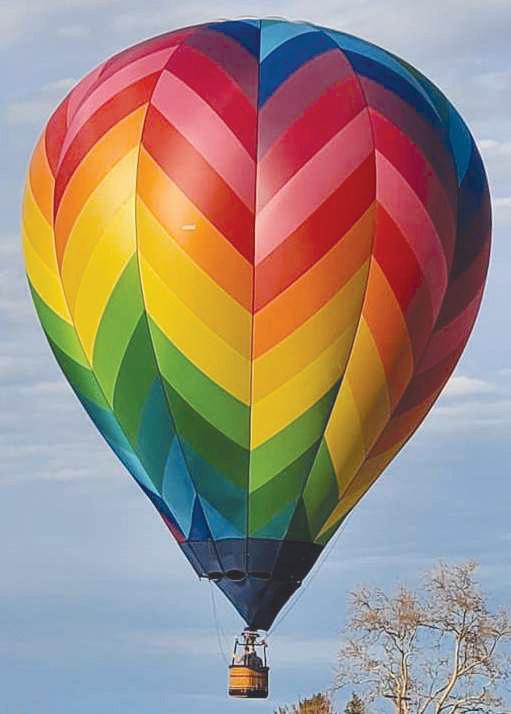
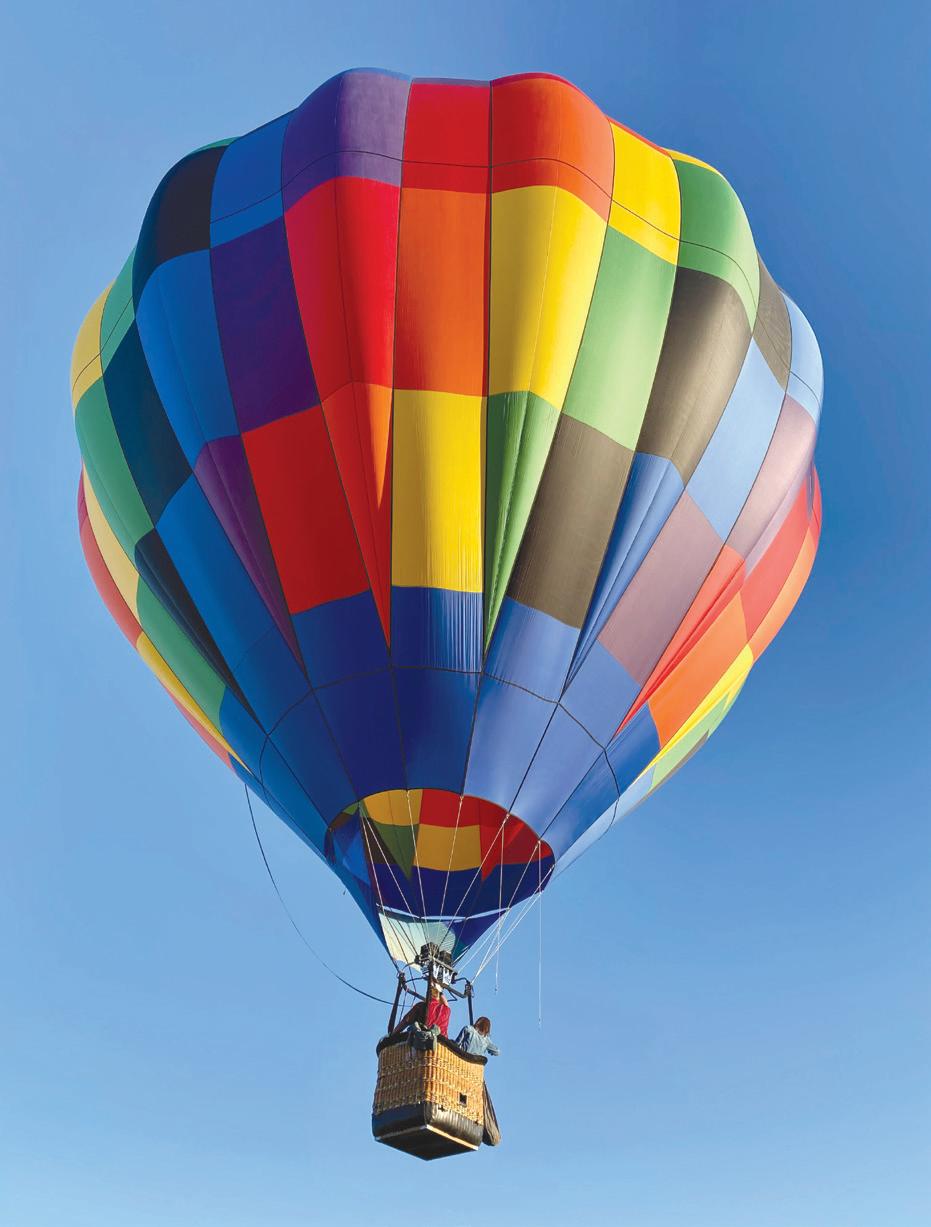
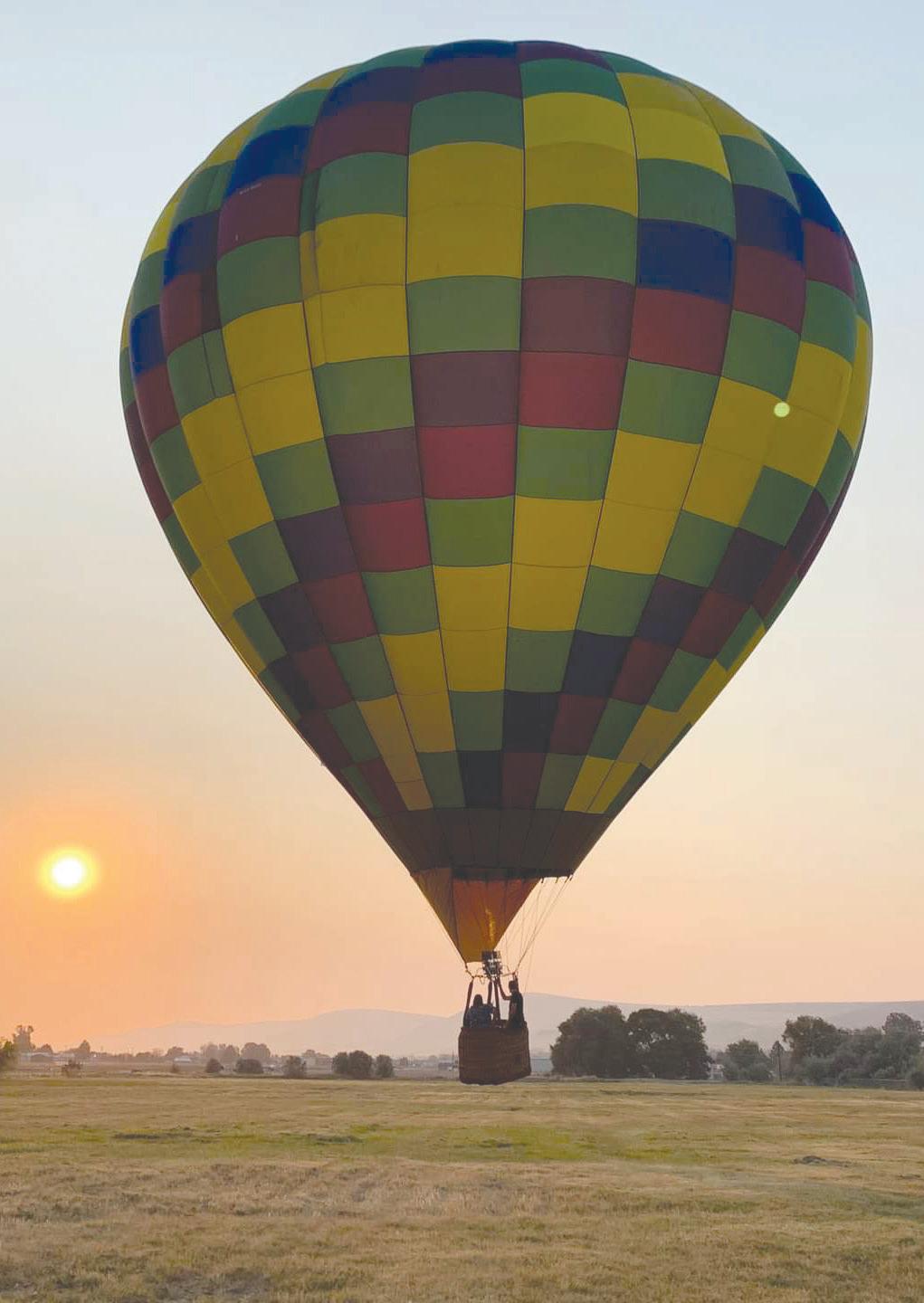
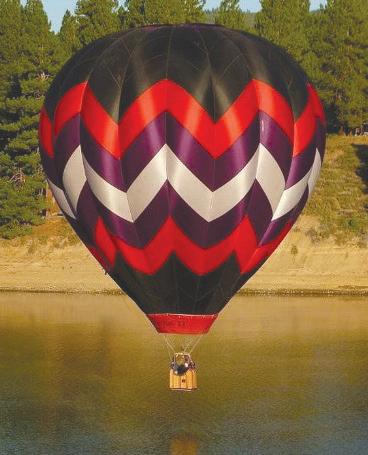
chevrons
Started in Ballooning: For some, love of the sport comes early in life. Such is the case for Dawne Rushkarski. Before the age of 10, Rushkarski began chasing balloons from the very first time she saw one. Begging her parents to take her ballooning for every event in Oregon State, they looked forward to Rushkarski getting her driver’s license so she could make those early morning treks on her own. 35 years later, Rushkarski can be found most flyable days either piloting one of her two balloons, someone else’s balloon, or chasing someone flying so she can photograph the action. A firm believer in the Disney motto “If you can dream it, you can do it”, Rushkarski knew that becoming a balloon pilot was a dream she would achieve.
Balloon Description/History: Balloon is multi-color spiral pattern. Made in 2002 purchased by Justin in 2023 from an owner in Cheryl.
This is Justin’s
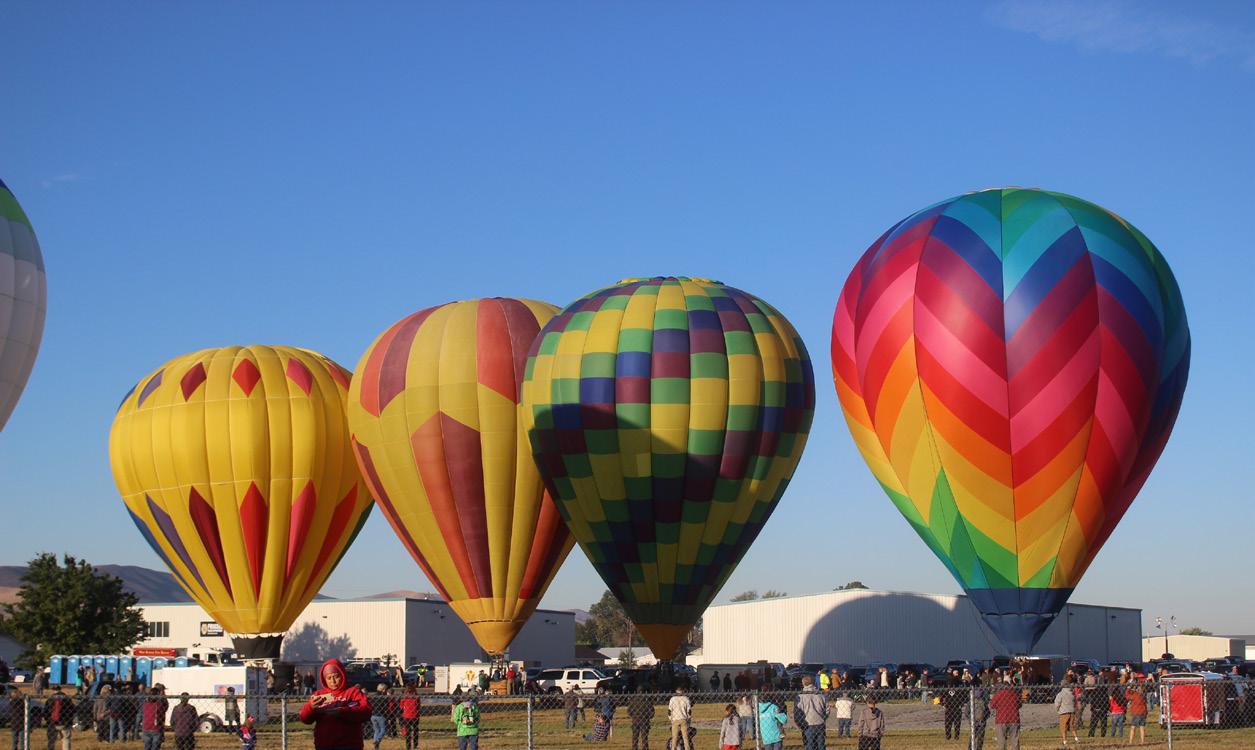
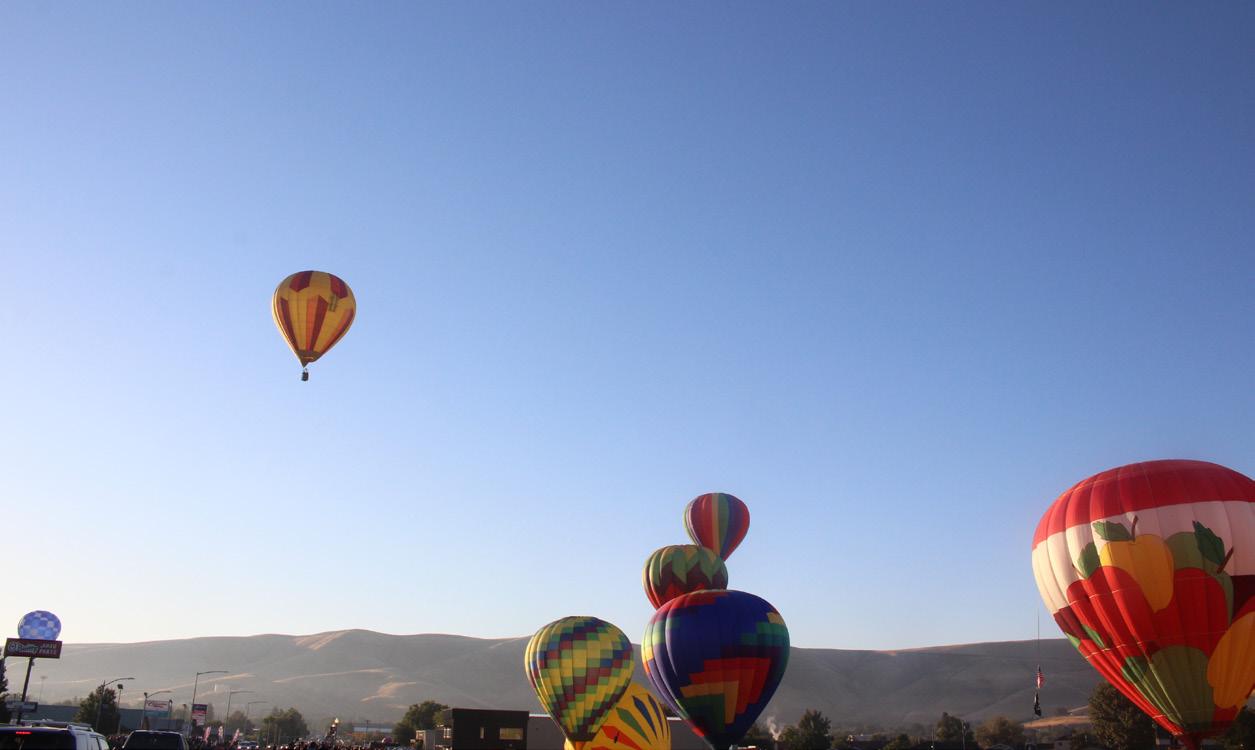
Whether
Ballooning History: Alan Sanderson was crew for some coworkers in the 1980s. He earned his commercial pilot certificate in 1992 in the Morgan Hill and Gilroy area south of San Jose, CA, and has flown over 930 hours in balloons. He has flown many events in the Western US, including Albany and Tigard, OR. He holds a FAA repairman certificate, and he owns Lindan Hot Air Service Center in Albany, the only FAA hot air balloon repair station in Oregon. He has received factory maintenance training on most major balloon brands, and is authorized to repair almost all brands, including some experimental balloons. This is his second appearance at this event.
From Market Research Intellect Aerospace and Defense
The hot air balloon ride market is witnessing a remarkable transformation, driven by changing consumer preferences, technological advancements, and a growing emphasis on unique travel experiences. As adventurers and tourists seek out new ways to explore the world from above, the industry is responding with innovative offerings and sustainable practices. This blog explores the top five trends shaping the hot air balloon ride market, offering insights into the




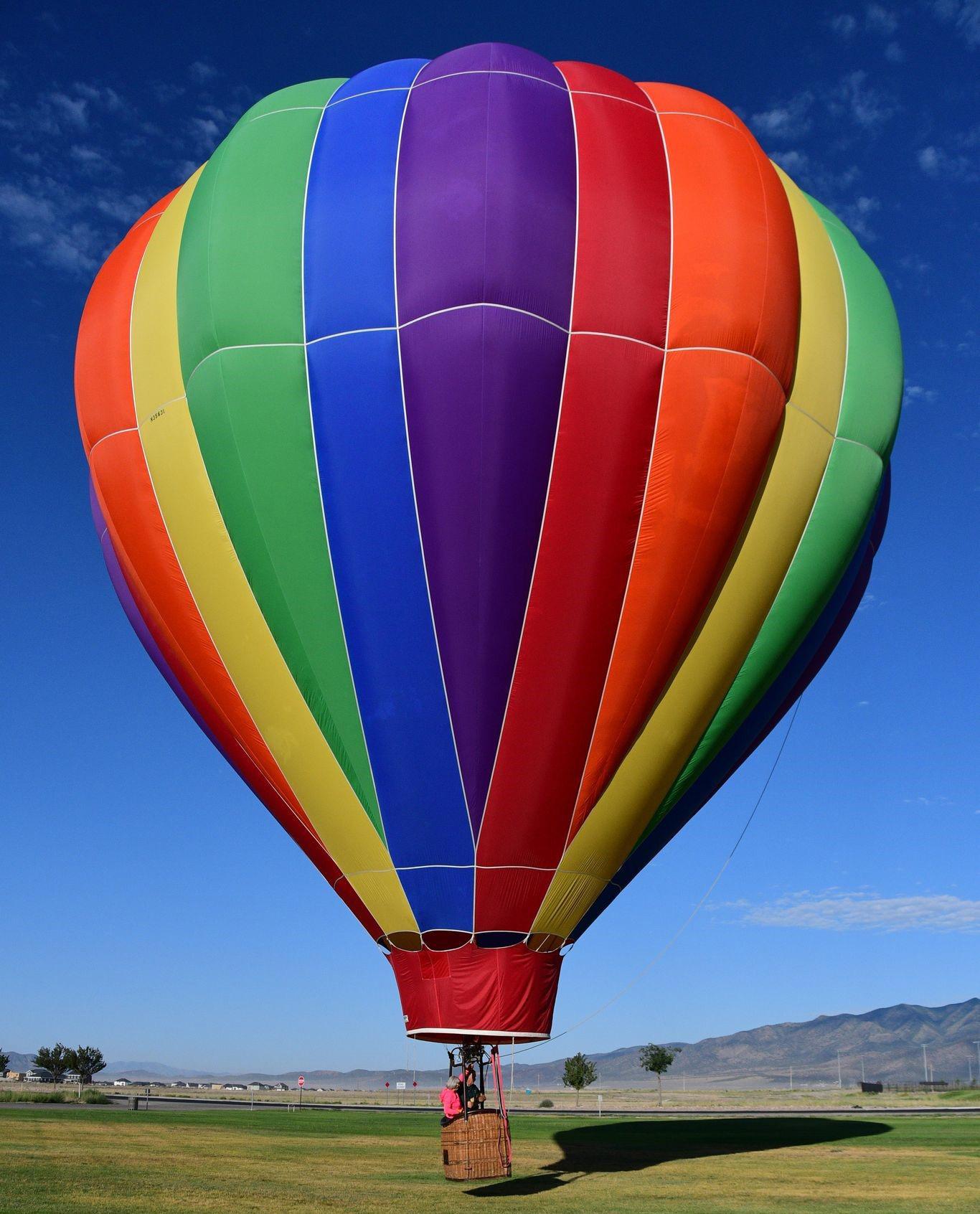
future of aerial exploration.
1. Eco-Friendly Innovations
Sustainability is at the forefront of the hot air balloon ride market. Operators are increasingly adopting eco-friendly practices, including the use of lighter and more fuel-efficient materials that reduce the carbon footprint of each flight. Additionally, some companies are exploring the use of alternative fuels and solar power to heat the air, aiming to offer completely green balloon rides. This trend reflects a broader shift within the travel industry towards more environmentally responsible experiences, catering to the growing number of eco-conscious consumers.
2. Customized and Themed Experiences
Personalization is becoming key in the hot air balloon ride market, with operators offering customized and themed flights to stand out. From romantic sunset rides and wildlife spotting tours to vineyard visits and historical tours, balloons are providing unique vantage points on a range of attractions. This trend caters to the desire for personalized travel experiences, allowing passengers to choose adventures that align with their interests, making each flight a unique and memorable
event.
3. Integration of Digital Technology
Digital technology is enhancing the hot air balloon experience, from booking to landing. Operators are leveraging online booking platforms, virtual reality (VR) previews of rides, and augmented reality (AR) apps that provide interactive maps and information about the landscape below during the flight. Social media integration is also prevalent, with companies encouraging passengers to share their experiences online. This digital engagement not only enriches the customer experience but also serves as a powerful marketing tool for operators.
4. Safety Innovations
Safety remains a top priority in the hot air balloon industry, with ongoing innovations aimed at enhancing the security and reliability of rides. Advances in weather prediction technology, GPS tracking, and emergency landing equipment are increasing the safety of balloon flights.
Operators are also investing in extensive pilot training programs and safety protocols to ensure passenger well-being, responding to consumers’ growing expectations for safe adventure activities.
5. Rise of Balloon Festivals
Balloon festivals are becoming a significant trend, attracting thousands of spectators and participants worldwide. These events offer an array of activities, from mass ascensions and night glows to races and cultural performances, turning balloon rides into a communal celebration of flight. The popularity of these festivals is not only boosting the visibility of hot air ballooning but also contributing to local tourism and economies, showcasing the balloon ride market’s potential to create immersive cultural experiences.
Conclusion The hot air balloon ride market is navigating through an era of significant change, driven by the desire for sustainable, personalized, and technologically integrated travel experiences. As operators adapt to these trends, they are not only elevating the thrill of balloon rides but also redefining what it means to explore the world from the skies. Whether it’s through eco-friendly practices, customized journeys, digital engagement, safety innovations, or the communal joy of balloon festivals, the industry is soaring to new heights, promising an exciting future for aerial adventurers.
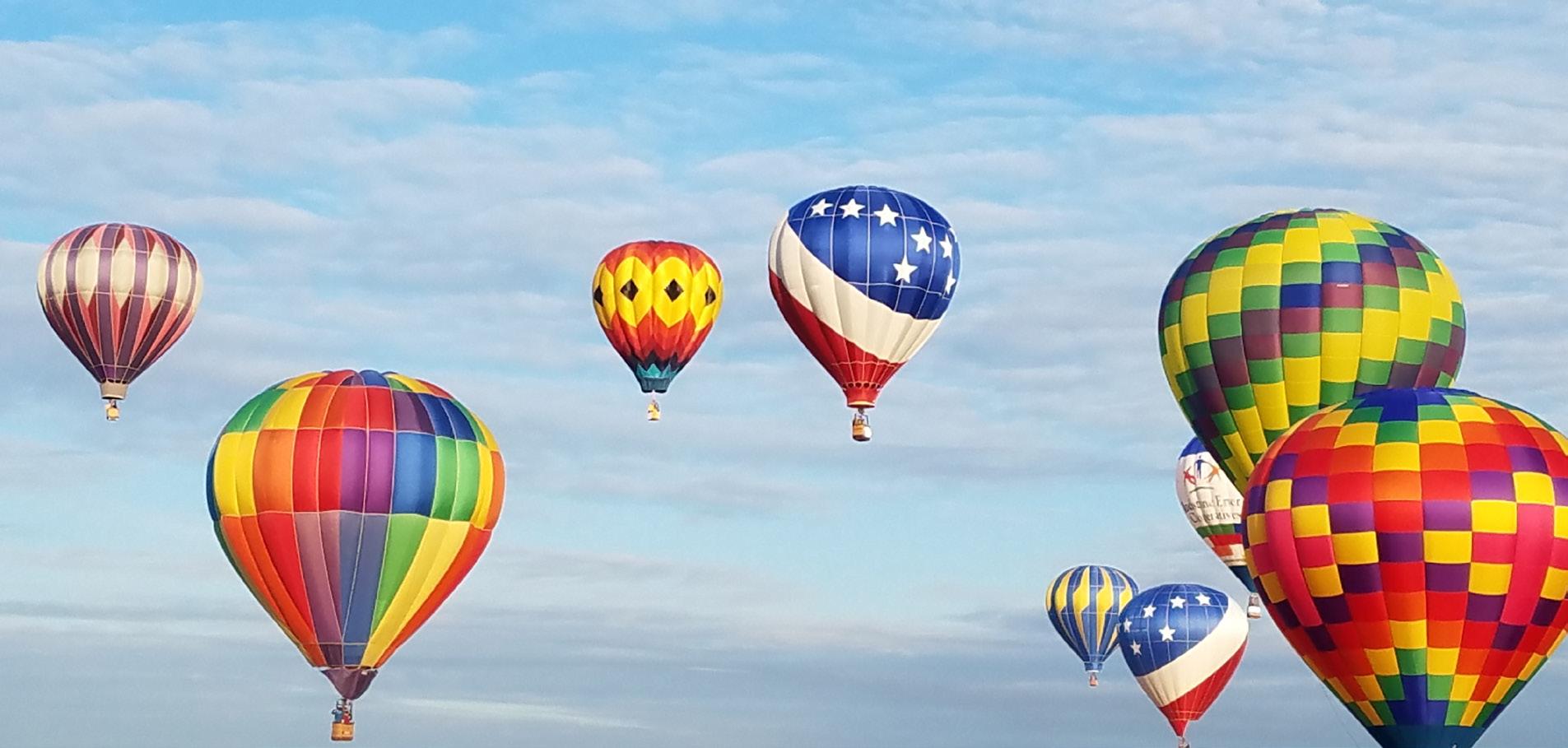
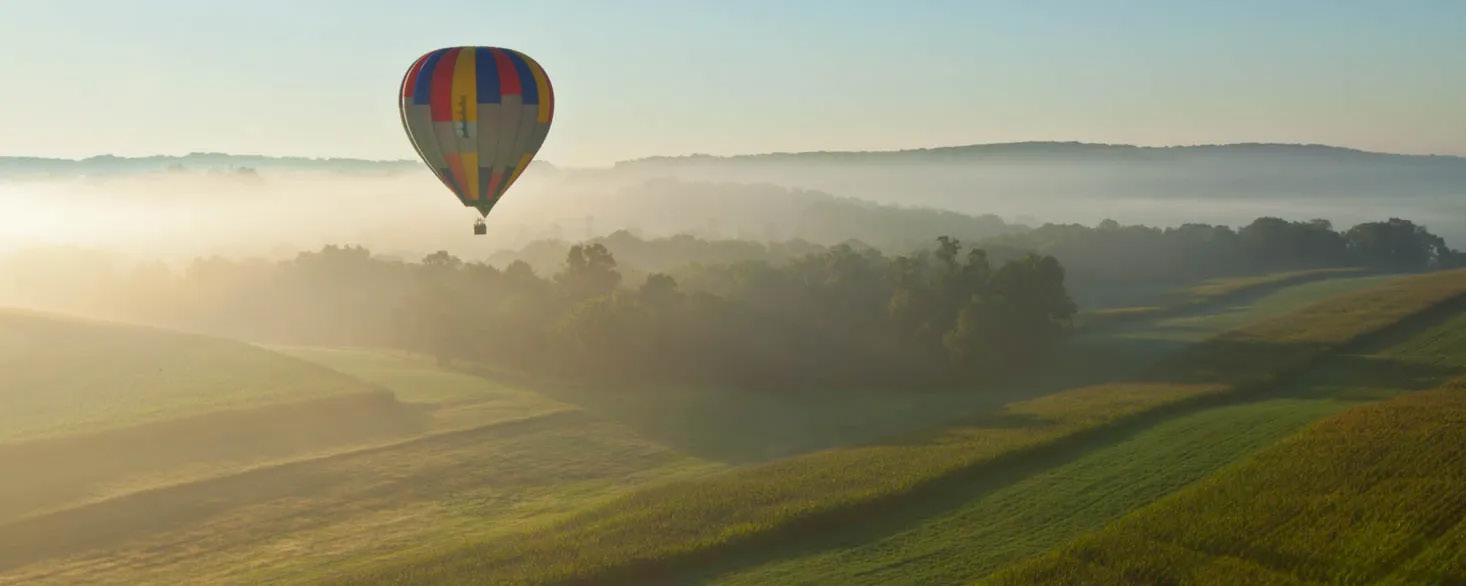
The North Carolina auto license tag proudly proclaims “First in Flight” because of the historic flight of the Wright
first airplane flight. However, the first flight actually occurred 120 years earlier in France! Of course, that was a flight of a hot-air balloon. Let’s follow the history of ballooning in the timeline below!
1709 A Brazilian priest, Bartolemeu de Gusmao, demonstrated a model hot-air balloon to Johan V of Portugal. No records exists to suggest that any passenger carrying balloon was then built.
1776
Henry Cavendish discovers hydrogen, which was found to be seven times lighter than air. In these early days, hydrogen was made by mixing sulfuric acid and iron. The race to fly was on.
1783
June - The Montgolfier brothers, Joseph and Ettienne J. began experimenting with small-scaled hot-air balloons built out of paper or light fabric.
August - Jaçques A. C. Charles launched an unmanned hydrogen balloon, The Globe, which travelled 15 miles (24 km) and reached an altitude of 3000 feet (915m). At the landing in Gonesse, the local peasants were so frightened that they attacked the balloon with pitchforks and scythes, thus destroying it.
September - The Montgolfier brothers launched an unmanned hot-air balloon from Versailles. Louis XVI had decreed that the first flight should be flown with animals. A duck, a sheep, and a rooster became the first air travellers. If it wasn’t this flight, then it was had to be another one within the following 2 months.
November - For the first time in recorded human history, we leave the confines of the Earth’s surface and take flight among the birds. Over 400,000 Parisians, including Louis XVI and Marie Antoinette, witnessed as the Marquis François d’Arlendes and Jean-François Pilâtre de Rozier flew in the very first flight in a Mongolfier built hot-air balloon. This flight lasted 25 minutes and covered seven miles (11 km).
December - Just 10 days after the Montgolfier flight, Jaçques A. C. Charles piloted the first gas balloon flight. Also launched in Paris, this flight lasted 2 1/2 hours and covered a distance of 27 miles (43 km). The first recorded change out of a passenger occured on this flight when Charles landed and dropped off his passenger Professor Robert, then took off again. Charles then flew to height of 9000 ft (2750 m).
1784
January - Joseph Montgolfier made his only recorded flight in Le Fleusselles. This balloon is believed to have had a passenger carrying capacity of more than 30 and the envelope must have been over 700,000 cf (20,000 cubic meters)! This was the largest hot-air balloon ever built until very recently! The flight originated in Lyon, France.
September - Vincenzo Lunardi, a minor Italian diploment, piloted the first balloon flight outside of France. A crowd of 100,000, including the Prince of Wales, watched as Lunardi launched his 18,200 cf (515 cubic meters) hydrogen balloon from Moorfields, England. He ultimately touched down near Ware.
November - Frenchman Jean-Pierre Blanchard and American John Jeffries make their first flight. This flight was from Rhedarium Garden, London to the banks of the Thames.
1785
January - Blanchard and Jeffries make the first crossing of the English Channel by balloon. This flight included the very first airmail letter!
July - Jean-François Pilâtre de Rozier attempted an English Channel crossing in a hybrid gas/hot-air balloon. This flight ended in disaster as a fire caused the hydrogen to explode. de Rozier and his passenger Romain were killed. This was the first avaition accident.
1793
January - After moving to America, Jean-Pierre Blanchard piloted the first known balloon flight in North America
Washington witnessed this flight.
The sky is the limit with these charming papier-mache balloons: Use them at children’s parties, baby showers, nurseries, or any place your decor needs a lift.
1. Blow up balloon and place in a
bowl for
Cut newspaper into long, skinny triangles.
2. Dip newspaper strips into glue mixture and papier-mache 3 layers of newspaper onto balloon. When papier-mache is completely dry, cut a small hole in bottom and slowly deflate the balloon. Even out the bottom hole with scissors. If the dry papier-mache is too wrinkled or bumpy, sand it smooth.
3. Section the papier-mache balloon into 8 equal lengthwise parts with 1/4-inch tape.
4. Alternating colors, paint sections of balloon with craft paint.
5. Remove tape. Attach 1/4-inch grosgrain ribbon over tape lines with fabric glue. Glue two long pieces of ribbon in an X over top of balloon, with ends hanging down to hold basket.
6. To make the hot-air balloon basket, mark a paper cup 2 3/4 inches from the bottom, all the way around the cup. Cut off the top of the cup with scissors. Paint cup with craft paint to match the balloon. Make four equidistant marks around top of cup, and then use a hole punch to make a ribbon hole at each mark. Add pom-pom trim around outside of cup with fabric glue.
7. Tie monofilament to a 2-inch length of dowel, then thread through top center of balloon for hanging. Hang balloon before attaching basket. To attach basket, thread four hanging ends of ribbon through each hole on the basket, from the inside out, then pull and slide ribbons until basket is level. Thread all ends of ribbon through a painted wooden bead under basket; tie in knot.
8. Add additional embellishments to balloon as desired.



Aerostat - A lighter-than-air craft. A hot-air balloon is an aerostat.
Aerostation - The science of lighter-than-air flight.
AGL - Above Ground Level.
Ammonia (NH3) - Type of balloon that uses ammonia as its lifting agent instead of helium, hydrogen or coal gas. Becoming very popular in 1990’s. Much less costly than flying other gas bags. Has approximately 0.5 lifting power of helium. Popularized by Tim Cole and Dennis Brown of Colorado. Ammonia gas is readily available in agricultural areas and smells a bit.
Balloon - A general term for an aerostat
Balloonatic - Fanatic balloon enthusiast. One who eats, drinks and sleeps ballooning. Why else would one get up at 4:30 in the morning to stand out in the cold and do hard manual labor? Why? Because they’re a balloonatic!
Barnes Basket - A triangular shaped basket used primarily on Balloon Works balloons. Named after its originator, Tracy Barnes.
Basket - Also referred to as the gondola; the part of the balloon used to carry the pilot and passengers, fuel tanks, and other equipment. Constructed from wicker and light wood base, or in the case of high-altitude and long-distance craft, pressurized materials.
Biner - a “D”, or “O” shaped locking metal clamp used to connect things together (in particular, load cables to baskets, or tie-off lines to retrieve vehicles).
British Thermal Unit (BTU) - the quantity of heat necessary to raise the temperature of a pound (0.45Kg) of water by one degree Fahrenheit (0.56 degrees Celsius).
BTU - British Thermal Unit
Burner - Device used to ignite and project flammable fuel (usually propane gas) up into the envelope to heat the air in a hot-air balloon. Burners come in a variety of configurations and powers (which are measured in BTUs, usually in the millions).
Chase - Also referred to as the “recovery” or “retrieve”; the process by which the aerostat. is tracked during flight and retrieved afterwards by crew on the ground or in another craft (like a boat).
Chase Crew - The crew that chases the balloon - also known as the retrieve crew.
Drop Line - A rope, belt or other line attached to the balloon (usually the gondola) on one end. Normally furled or stowed during flight, it can be released by the pilot and secured by ground crew members who use it to maneuver the craft into or through tight areas.
Envelope - The portion of the balloon which holds the heated air (for hot-air balloons) or gas for gas balloons. Constructed of cloth such as ripstop nylon or nomex, or other light, relatively impermeable material.
Fan - See inflator fan
FAA - Federal Aviation Administration
First Flight Ceremony - Those who have endured it need no explanation. Those who have not should know that its origins are cloaked in mystery and shrouded in the most sacred rites of ballooning. Suffice it to say that the ceremony involves various liquid refreshment (usually champagne). Once having successfully survived the ceremony, the Initiate has been officially inducted into the Noble Fraternity of Aeronauts.
Flap Inflation - Before the days of inflator fans, the only way to get cold air into the envelope prior to turning on the burner was to flap the top side of the mouth up and down. Once a small amount of air had been put inside the envelope, the pilot would periodically burn to heat the air as the mouth was flapped open. Clearly this might burn the inside of the balloon higher up, so necessitated a Cremation Charlie
Fly-in Task - A ballooning event where pilots attempt to fly from a designated distance to a single point, usually a scoring “X”. Also known as Controlled Navigational Trajectory Event, or a Navigational Trajectory Event.
Glows- Are done at night; the balloon is secured to the ground and illuminated when the propane is fired.
Gondola - See basket
Greasy Spoon - A road side cafe typically serving bacon and eggs, and all the wholesome things balloonists like to eat on the way home from a lovely morning flight.
Hare and the Hounds - A non-competitive balloon is chosen as the hare. When the hare lands, he places a large X to mark his spot. The hounds must then try to drop a bean bag on the X. The closest to the center gets the most points.
Hesitation Waltz - Competition for which multiple judgedeclared goals are set.
Hopper - An aerostat; the pilot sits in a chair or harness underneath the envelope, as opposed to standing in a basket
Inflator Fan - Hot air can’t be directly put into the envelope it first has to be filled with cold air using the inflator fan. Only then can this air be heated using the burner. Before fans, the balloon had to be flap inflated
Judge Declared Goal - Competition for which a single target is set and all balloons fly from the launch site with the aim of dropping their markers as close as possible to the goal.
Key Grab - A competition for which a key is placed on top of a pole; the first one to get to the pole and grab the key wins the prize. The key is sometimes a key to a truck, car or motorcycle.
Landowner - The person, business or organization which
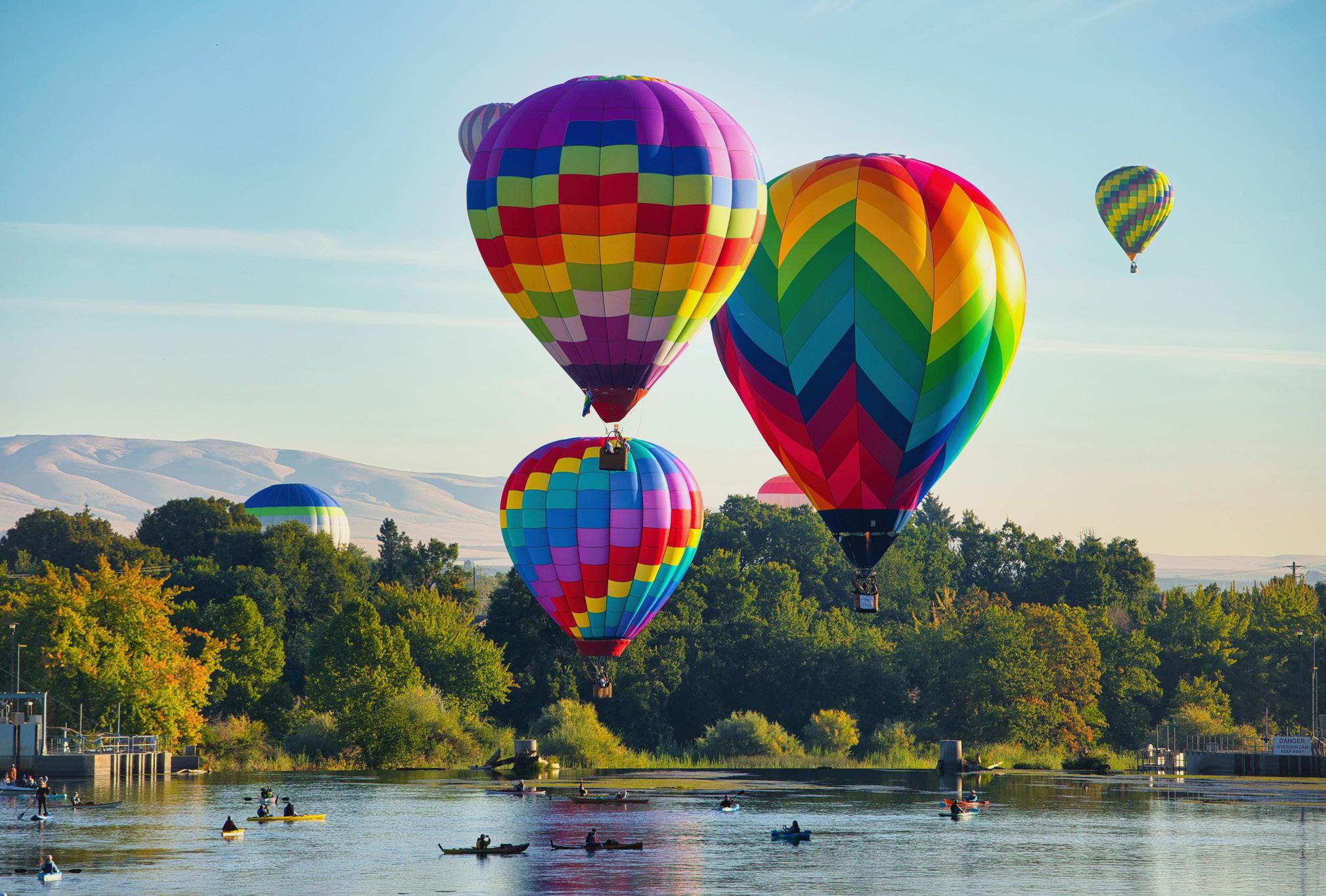
holds the title to the property upon which the aerostat launches and/or lands.
Landowner Relations - Extremely important for ballooning activities, especially considering the limited control over landing location. Ideally, the pilot or chase crew should secure permission from the landowner before landing on their property. The wishes of the landowner take precedence during landing and recovery, within the limits of flight physics and safety. Landowner relations also apply to low overflights of landowners property.
Load Tapes - Reinforced vertical seams along the length of the envelope, connected by the load cables to the basket. The actual load-bearing parts of the envelope.
Mouth - The opening at the base of the balloon envelope through which the flames from the burner passes to heat the air inside the envelope. This is sometimes referred to as the “throat” - but by who I don’t know.
MSL - Above Mean Sea Level.
Nomex - Fire-resistant material that the scoop and bottom section of the envelope are made of.
Pilot Declared Goal - Is the same as the JDG, but the pilot chooses his target.
Poles - The stabilizing struts between the basket, the burner mount and the load cables. On some balloons the poles are actually load-bearing elements; on others they simply act as stiff or slightly flexible guides for the actual load-bearing elements and connections from envelope sensors to the instrument console. Also referred to as “burner supports”, “supports” or “flexi poles” there main job is to stop the burner knocking you on the head during landing.
Prohibited Zone - A restricted operation zone where balloon launchings and landings are prohibited by the landowner. In some cases, a minimum altitude restriction may also exist.
PUT - Short for “Pilot Under Training”.
PZ - See prohibited zone
Red Zone - See prohibited zone
Rip-stop Nylon - The material that makes up most of envelope
Restricted Operations Zone - A land area on or over which balloon operations are restricted by the landowner. Also referred to as a prohibited zone (PZ) or a sensitive zone (SZ).
Retrieve Crew - See chase and chase crew
Rosiere - Type of balloon that uses both gas and hot air. Sometimes called a hybrid. Nick Saum home built unit in mid -80s and set many World Class Records. Flying AM-2 went 340 miles in 17 hours. Took off at approximately 5 pm and landed 11 am next day. Later took same balloon to over 18,000’ MSL for alt. record. Takeoff was about 3900’ MSL. Cheyenne Wells, CO to Syracuse, KS USA. Ground temp was 25 F, so don’t you know that got a little chilly. Steve Fossett is one of the latest to use this type of balloon. He flew from Seoul, ROK to Leader, Saskatchewan, Canada in February 1995 over 5400 miles solo. Best Trans-Pacific flight yet. That flight took 102 hrs and 15 minutes. (Camerons make the best ones, of course).
Scoop - A specialized-shape skirt which, on American balloons, narrows to an inch or two on one side and widens to extend all the way from the top of the poles to the base of the envelope proper, forming a tilted mouth. The idea of the scoop is to provide better control of the aerostat’s orientation. Ideally, the front (or main part of the scoop) will always be kept in the direction of travel. It may also aid in keeping the envelope full.
Sensitive Zone - A restricted operation zone where balloon launchings and landings may be allowed by the landowner under special circumstances. In some cases, a minimum altitude restriction may also exist.
Skirt - The cloth segment of the envelope below the load cable connections, frequently detachable, often made of Nomex or similar fire-resistant material.
Splash and Dash - A fun and exciting maneuver balloonists make when flying over a body of water. Balloon pilots have precise control of their altitude, which allows them to bring the bottom of the basket to the surface of the water. This provides a unique opportunity for passengers to take a photo of themselves in the reflection cast off the water’s surface. If the wind is calm when a splash and dash is done in a river, the current will move the balloon, causing them to float gently downstream. When the pilot has had his fun, he will simply add heat and back to the sky they will rise. A balloon flight can be compared to a magic carpet ride, and a splash and dash is like walking on water
Spotter - Someone who delights in collecting balloon licence numbers, badges and anoraks.
Supports - See poles
SZ - See sensitive zone
Tether - The securing of the balloon to the ground and raising it up to 150 feet.
Throat - See mouth
Thumbs Up - The signal from a launch director that the airspace above is clear and you have permission to launch. Any digit other than the thumb means something entirely different.
Weather Rock - Any smooth stone thrown at the weatherman when he tells you it’s going to be unflyable again.
Yellow Zone - See sensitive zone
Zebedee List – For the sale/wanted list for second hand balloons and balloon equipment.
